A few years ago I did a BookNotes post suggesting that, in light of the vast implications of Easter, we should embark on what we might call a plan of “resurrectionary reading.” That is, we embrace God’s merciful grace, the victory of Christ over Death, the nearness of the Kingdom of God restoring all broken things, and assert that new creation realities are breaking into life — all of life. If we are “new creations” in Christ, and the day in the Christian calendar set aside to Christ’s resurrection reminds us of that newness breaking forth from the great news of the empty tomb — think of the simple brilliance of N.T. Wright’s last book called Simply Good News which explained why the gospel is good, and why it is news! — then we should be somewhat intentional about thinking through the implications of resurrection for life.
Such a plan of discerning how to “sing a new song to the Lord” in light of the resurrection for all of life might be called resurrectionary reading. Alas, the phrase never seemed to catch on, and even I forgot to use it again.
To wit: Beth and I and the team here at Hearts & Minds wish you Happy Easter, or Resurrection Day, as some wisely call it. And welcome to this installment of “resurrectionary reading.”
More specifically, here are some books that are about the implications of the resurrection life, or on the topic of hope. At the Sunday morning Jubilee talk I gave at that large conference a little more than a month ago I talked about Big Hope. That is, if the full vision of the future is as the Bible says — true forgiveness, restoration, all of life redeemed, re(new)ed creation, the redemptive healing of the cosmos into the New City of Revelation 22 — then we, indeed, should be pulled by that true future into a new way of life; our hope in the final goal and goodness of God’s plan should compel us to live now as people of hope, people of the future, if you will. At the very least, we bear witness to, create signposts of, what we think life will be like someday. We anticipate, we wait, but that is done in hope. Resurrection hope, I’d say, today.
Indeed, the New Testament (I Peter 3:15) tells us to “always be ready to give an account of the hope that lies within us.” As I quipped to the Jubilee crowd, that really does presume that people are asking, doesn’t it? Why be ready to explain if nobody wonders, if nobody asks? Our lives should be so full of hope — this seems particularly counter-cultural in these cynical days — that people should be curious, wondering what’s gotten in to us. Why in the world aren’t we jaded and cynical, broken and forlorn? Why, even in our sadnesses and griefs do others catch a glimpse of some profound tone, a confidence born of hope, underneath? Why does our hope manifest itself in such realism that we offer solidarity with the hurting and abused (even the Earth itself)? What does it look like to offer real, substantive, sturdy hope — not sentimentalized or cheaply reduced to glib cheer — to a needy, needy, world?
Here are a handful of books that might inspire us to be more confident in our being harbingers of hope. And maybe more articulate about our answers when people ask. Always be ready, it says. So here’s some resurrectionary reading.
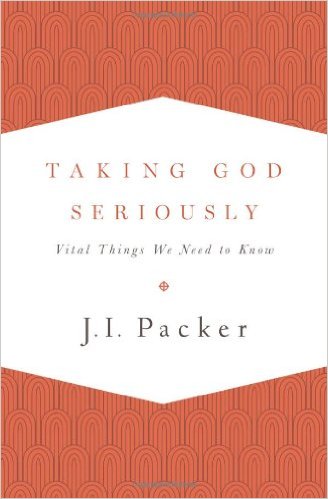 Taking God Seriously: Vital Things We Need to Know J.I. Packer (Crossway) $14.99 If we are going to be people of hope we must be people grounded in the gospel and serious about the historic Christian faith. This book is said to be a “plea for sober, modest, thoughtful and orthodox theology” and is very much designed as a much-needed adult catechesis. I do not agree with Packer on everything, wouldn’t ascribe the same sort of importance to each matter that he seems to, and I believe that in his mostly helpful analysis of the drift of the contemporary mainline churches he misses some things. He is a British Anglican, and writes about the lack of unity in the worldwide Anglican communion in part due to the bold moves of Canadian Anglican and US Episcopalians to affirm same sex marriages which he sees as a betrayal of Biblical fidelity; it is that complex rive that also inspired this book. But that particularity aside, Packer is helpful in clearly and rather carefully outlining the core commitments that are common to those that profess belief in Christ and includes, as he says, “vital things we need to know.” In a good preface he laments that the church is losing strength and vitality for being undernourished — which he suggests comes from shepherds not adequately feeding their flocks. Hence, this little book, clear, systematic, interesting.
Taking God Seriously: Vital Things We Need to Know J.I. Packer (Crossway) $14.99 If we are going to be people of hope we must be people grounded in the gospel and serious about the historic Christian faith. This book is said to be a “plea for sober, modest, thoughtful and orthodox theology” and is very much designed as a much-needed adult catechesis. I do not agree with Packer on everything, wouldn’t ascribe the same sort of importance to each matter that he seems to, and I believe that in his mostly helpful analysis of the drift of the contemporary mainline churches he misses some things. He is a British Anglican, and writes about the lack of unity in the worldwide Anglican communion in part due to the bold moves of Canadian Anglican and US Episcopalians to affirm same sex marriages which he sees as a betrayal of Biblical fidelity; it is that complex rive that also inspired this book. But that particularity aside, Packer is helpful in clearly and rather carefully outlining the core commitments that are common to those that profess belief in Christ and includes, as he says, “vital things we need to know.” In a good preface he laments that the church is losing strength and vitality for being undernourished — which he suggests comes from shepherds not adequately feeding their flocks. Hence, this little book, clear, systematic, interesting.
From themes of the authority of Scripture to the importance of the unity of the Body of Christ, from reflections on repentance to the role of the Holy Spirit in renewal, from understanding baptism to a healthy, regular practice of the Lord’s Supper, each chapter in Taking God Seriously invites us to serious formulations rooted in historic, conventional, orthodox faith. There are discussion questions at the end of each chapter. Those of us that are not in denominations or faith traditions that are contentious will still learn much from this, and for those of us who are in troubled communions will — even if we wouldn’t put things quite like Packer does here — benefit from this clear-eyed, warm-hearted, mature business of taking God and faith seriously. This is not a razzle-dazzle call to commitment, although Packer wants full-life dedication to the things of God. But it is, more, a careful, brief, exploration of what many feel are nearly non-negotiables of historic, creedal faith. This, to me, is a sign of hope for only in the life-giving resurrection of Christ can we have any plausible expectations that the faith can be renewed in our churches and that our theological confusions can be clarified and reformed and understood afresh.
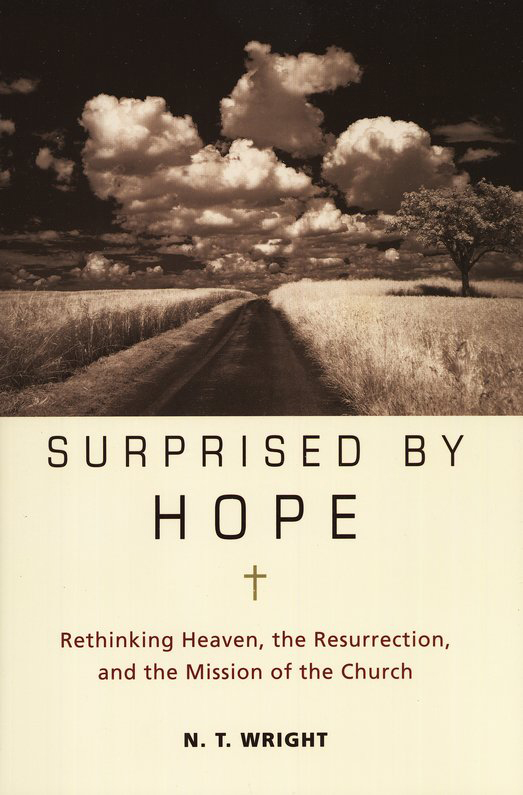 Surprised by Hope: Rethinking Heaven, the Resurrection, and the Mission of the Church N.T. Wright (HarperOne) $24.99 In case you are one of the few BookNotes readers who have not yet heard of this extraordinarily important book, allow me to commend it to you now. Tom Wright, as I assume you know, is one of the leading New Testament scholars of our time, and a curious fellow — he is a former Bishop in the Anglican Church (yes, he is a Brit) who writes both popular level stuff for church folks and super scholarly works for the academic Biblical studies guild. He is exceptionally prolific, a musician, tireless lecturer, an active churchman, and somewhat of a rock star in our circles. Some who are more progressive in their faith think he is way too conservative theologically and some strictly Reformed conservatives think his views of justification are suspicious, making him too liberal. Gotta love it when both sides want to crucify you. When we hosted him at Hearts & Minds we were deeply touched by the diversity of folks that came out to meet him, and we were — as we expected — dazzled by his eloquence, his scholarly clarity, and his evangelical zeal for the Kingdom of God. (The book about the Kingdom that he lectured from that day, How God Become King just came out in paperback, by the way. Yay!)
Surprised by Hope: Rethinking Heaven, the Resurrection, and the Mission of the Church N.T. Wright (HarperOne) $24.99 In case you are one of the few BookNotes readers who have not yet heard of this extraordinarily important book, allow me to commend it to you now. Tom Wright, as I assume you know, is one of the leading New Testament scholars of our time, and a curious fellow — he is a former Bishop in the Anglican Church (yes, he is a Brit) who writes both popular level stuff for church folks and super scholarly works for the academic Biblical studies guild. He is exceptionally prolific, a musician, tireless lecturer, an active churchman, and somewhat of a rock star in our circles. Some who are more progressive in their faith think he is way too conservative theologically and some strictly Reformed conservatives think his views of justification are suspicious, making him too liberal. Gotta love it when both sides want to crucify you. When we hosted him at Hearts & Minds we were deeply touched by the diversity of folks that came out to meet him, and we were — as we expected — dazzled by his eloquence, his scholarly clarity, and his evangelical zeal for the Kingdom of God. (The book about the Kingdom that he lectured from that day, How God Become King just came out in paperback, by the way. Yay!)
The hardback Surprised by Hope: Rethinking… is a major work, much discussed, and very thorough. There are moments when it is even a bit tedious, but he is being careful, detailed, covering all the options before making his compelling conclusions. I think it is perhaps the finest book on the significance of and daily implications of the bodily resurrection of Christ and the subsequent promise of new creation ever written. I simply know of no other book like it, and very few that even come close. Highly recommended.
The six-session DVD of the same title, by the way, is truly excellent and would be a perfect resource for an adult class or small group this season. Agree or not with every detail of his view of “heaven, resurrection, and the mission of the church” I guarantee that you will be very, very impressed by the quality of the production.
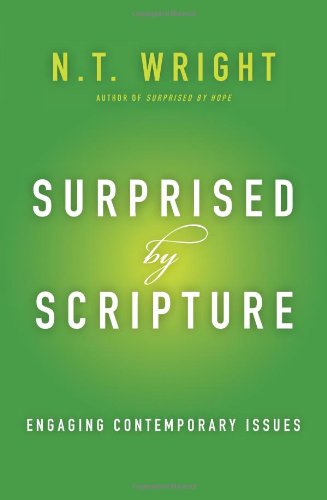 Surprised by Scripture: Engaging Contemporary Issues N.T. Wright (HarperOne) $15.99 If resurrection reading might include reflecting on how Christ’s death and resurrection vindicates his claim to be the true King of the world, and, therefore, how we as his followers should live, then this book could be a fine, fine guide and resource. Here, Wright weighs in on a variety of contemporary issues, offering Biblical insights on topics as diverse as art and science, the role of women, creation-care, and international peacemaking. These are all talks he was asked to give at conferences or seminars, apparently indicating an interesting in seeing how his fairly detailed theological vision plays out in real life, in our culture, today. Wright would be the first to admit that he is speaking into these spheres of influence not as an expert but as a pastor, a New Testament scholar, trained in history and a bit in theology. These are lively, upbeat, sometimes provocative and, for some, life-changing. Ho
Surprised by Scripture: Engaging Contemporary Issues N.T. Wright (HarperOne) $15.99 If resurrection reading might include reflecting on how Christ’s death and resurrection vindicates his claim to be the true King of the world, and, therefore, how we as his followers should live, then this book could be a fine, fine guide and resource. Here, Wright weighs in on a variety of contemporary issues, offering Biblical insights on topics as diverse as art and science, the role of women, creation-care, and international peacemaking. These are all talks he was asked to give at conferences or seminars, apparently indicating an interesting in seeing how his fairly detailed theological vision plays out in real life, in our culture, today. Wright would be the first to admit that he is speaking into these spheres of influence not as an expert but as a pastor, a New Testament scholar, trained in history and a bit in theology. These are lively, upbeat, sometimes provocative and, for some, life-changing. Ho
w good to realize (surprising to some) that God cares about all of life and that thoughtful Christians can engage the arts and sciences and civic life.
I like the way Publishers Weekly puts it:
Pithy prose and compassionate and serious biblical interpretation. . . . To reveal some of Wright’s conclusions would be like leaking cinematic spoilers; such is the inventive and surprising way that Wright brings the Bible to bear on current, and vexatious, affairs.
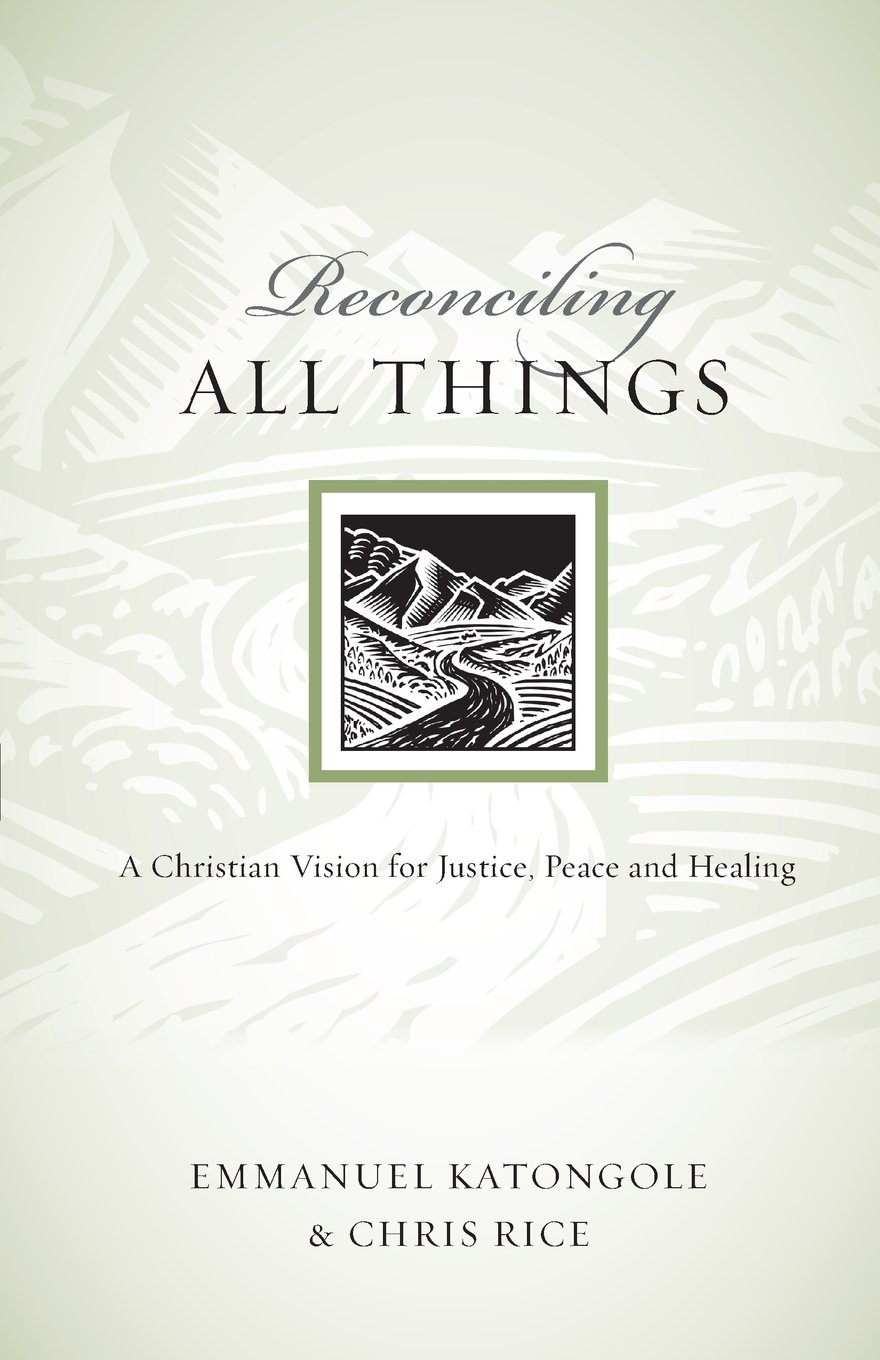 Reconciling All Things: A Christian Vision for Justice, Peace, and Healing Emmanuel Katongole & Chris Rice (IVP) $17.00 I have often recommended the six books in the series called “Resources for Reconciliation” from the Duke Seminary Center for Reconciliation. This is the first one in that good series, authored by an African church leader, scholar, and theological professor and a US civil rights activist and professor. If the gospel means anything it certainly means that we can be reconciled, in Christ, to God, self, others, the creation itself. Our alienation is healed, that which is broken can be bridged.
Reconciling All Things: A Christian Vision for Justice, Peace, and Healing Emmanuel Katongole & Chris Rice (IVP) $17.00 I have often recommended the six books in the series called “Resources for Reconciliation” from the Duke Seminary Center for Reconciliation. This is the first one in that good series, authored by an African church leader, scholar, and theological professor and a US civil rights activist and professor. If the gospel means anything it certainly means that we can be reconciled, in Christ, to God, self, others, the creation itself. Our alienation is healed, that which is broken can be bridged.
This is a wonderful manifesto-like call to see the Biblical basis for a transformational vision of reconciliation. Marva Dawn says it is “a critically important book and an incisive beginning to what promises to be a world-changing series. Christians have a unique vision to live the new creation of wholehearted community!” Do you believe people can forgive even the most horrific abuses? Can the most hostile enemies be made one? Can the power of Christ’s victory do that? What amazing grace, what amazing love as the old hymn puts it.
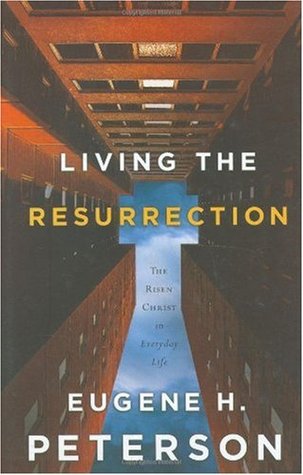 Living the Resurrection: The Risen Christ in Everyday Life Eugene Peterson (NavPress) $16.99 I so love this book, and can’t believe it isn’t better known. I have read it more than once; years ago I taught an adult ed class based on this book and we really appreciate it. Here, Peterson gives wise and useful guidance towards how to live out the implications of the resurrection, by studying the post-resurrection stories in the gospels. I trust you know that Peterson does a close, literary reading of the Biblical texts, often tells stories — not breathy dramatic ones, but those of homespun wisdom about ordinary life. And he writes so very well. As a long-time pastor and Biblical scholar and lover of great books and poetry, he is the sort of author I say to read anything he writes! And this: is is short and solid and really, really good.
Living the Resurrection: The Risen Christ in Everyday Life Eugene Peterson (NavPress) $16.99 I so love this book, and can’t believe it isn’t better known. I have read it more than once; years ago I taught an adult ed class based on this book and we really appreciate it. Here, Peterson gives wise and useful guidance towards how to live out the implications of the resurrection, by studying the post-resurrection stories in the gospels. I trust you know that Peterson does a close, literary reading of the Biblical texts, often tells stories — not breathy dramatic ones, but those of homespun wisdom about ordinary life. And he writes so very well. As a long-time pastor and Biblical scholar and lover of great books and poetry, he is the sort of author I say to read anything he writes! And this: is is short and solid and really, really good.
There are three long chapters in Living the Resurrection — an opening one called “Resurrection Wonder” and a second called “Resurrection Meals” and the third which is called “Resurrection Friends.” Peterson says, “When the resurrection becomes the core reality of our spiritual formation, our dimmed eyes and dull souls are lifted to a place of continual renewal.” Perhaps in reading this you’ll discover anew what life is like when every day is resurrection day. Yes!
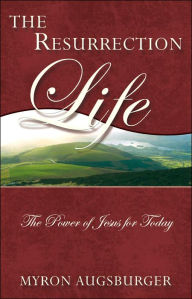 The Resurrection Life: The Power of Jesus for Today Myron Augsburger (Evangel Publishing House) $12.99 What a great read, a fabulously written and very thoughtful invitation to explore the significance of the resurrection. Christ is alive — we say that. His resurrection is a victory, somehow, not just over physical death but over evil forces and disorder. Augsburger carefully studies much of what this means, and what it “looks like” in daily life. It is a very fine book, serious, but not dry. I like what Dr. Jay Kesler, President Emeritus of Taylor University wrote about this fine work:
The Resurrection Life: The Power of Jesus for Today Myron Augsburger (Evangel Publishing House) $12.99 What a great read, a fabulously written and very thoughtful invitation to explore the significance of the resurrection. Christ is alive — we say that. His resurrection is a victory, somehow, not just over physical death but over evil forces and disorder. Augsburger carefully studies much of what this means, and what it “looks like” in daily life. It is a very fine book, serious, but not dry. I like what Dr. Jay Kesler, President Emeritus of Taylor University wrote about this fine work:
Myron Augsburger has written into the postmodern world the same argument and the same truth claims that the Apostle John wrote into the Greco-Roman world in his reflecting gospel. The audacious claim of the Christian gospel is validated by the actual physical resurrection of Jesus Christ from the dead and that resurrection power is transformational to all who truly believe that it is so. The Resurrection Life is not only powerfully written and illustrated, but also demonstrates half a century of the author’s faithful global ministry.
I hope you know of Dr. Myron Augsburger who is an esteemed Mennonite scholar and evangelist, leader within higher education and inter-denominational church work. It seems he may not have done any books recently, but this “oldie” is one I really, really like. The Resurrection Life is a rare and good book, highly recommended for your stimulating reading this season.
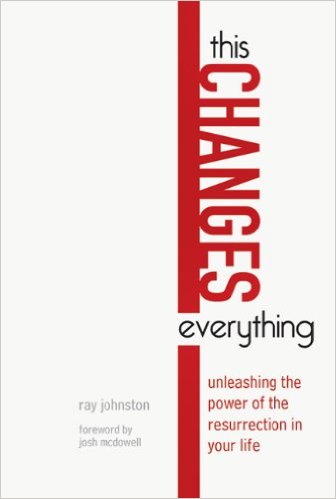 This Changes Everything: Unleashing the Power of the Resurrection in Your Life Ray Johnston (Biblica) $13.00 This is a book full of great messages, good guidance, basic Christian living stuff about applying the truth celebrated in our communal cry “He Is Risen!” and ordinary, daily life. Popular writer and hip church dude (at LifeChurch TV) Craig Groeschel says “The power of God in Ray Johnston’s life is undeniable. In his book This Changes Everything Johnston shows us how Christ’s resurrection power can transform our lives.”
This Changes Everything: Unleashing the Power of the Resurrection in Your Life Ray Johnston (Biblica) $13.00 This is a book full of great messages, good guidance, basic Christian living stuff about applying the truth celebrated in our communal cry “He Is Risen!” and ordinary, daily life. Popular writer and hip church dude (at LifeChurch TV) Craig Groeschel says “The power of God in Ray Johnston’s life is undeniable. In his book This Changes Everything Johnston shows us how Christ’s resurrection power can transform our lives.”
He starts the book with a great story of a married couple who were disappointed when the lavish honeymoon suite they check into for their first night of marital bliss was, well, a bit dumpy. They slept on a foldaway couch, lumpy and bumpy. The next day they realized what they thought was a closet door opened to the bridal suite bedroom — lavished with roses and chocolate. All there, available for them, but not even used.
What a story — and a good way to start this book about the often untapped power of the resurrection that is available but often not appropriated. For those wanting a rather simple guide to the personal aspects of the resurrection, this is a fine collection of practical messages.
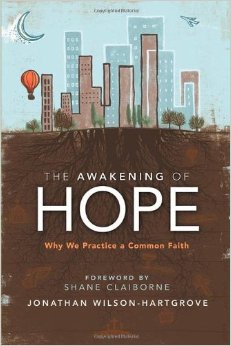 The Awakening of Hope: Why We Practice a Common Faith Jonathan Wilson-Hartgrove (Zondervan) $14.99 I know if you are a Hearts & Minds BookNotes reader or friend of the shop you know we have been raving this month about the brand new book by James K.A. Smith called You Are What You Love: The Spiritual Power of Habit where (among other things) Professor Smith calls us to pay more attention to church life, liturgy, worship, and other habit-forming practices that can re-index our hearts, even our longings and desires. We may not love what we think we do, and the way to unite “heart and mind and hands” in a unified lifestyle is to be engaged in local practices of a local church. In this book Jonathan Wilson-Hartgrove describes the visions and practices of his own community of faith and the stuff they do to make the congregation a true faith community that is formative over the life and discipleship of the members. This is historic, robust, solid stuff, brought with a bit of feisty missional energy by one who shares life with the poor, having been a partner in crime with “ordinary radical” Shane Claiborne (who wrote the foreword and appears in the accompanying DVD curriculum.)
The Awakening of Hope: Why We Practice a Common Faith Jonathan Wilson-Hartgrove (Zondervan) $14.99 I know if you are a Hearts & Minds BookNotes reader or friend of the shop you know we have been raving this month about the brand new book by James K.A. Smith called You Are What You Love: The Spiritual Power of Habit where (among other things) Professor Smith calls us to pay more attention to church life, liturgy, worship, and other habit-forming practices that can re-index our hearts, even our longings and desires. We may not love what we think we do, and the way to unite “heart and mind and hands” in a unified lifestyle is to be engaged in local practices of a local church. In this book Jonathan Wilson-Hartgrove describes the visions and practices of his own community of faith and the stuff they do to make the congregation a true faith community that is formative over the life and discipleship of the members. This is historic, robust, solid stuff, brought with a bit of feisty missional energy by one who shares life with the poor, having been a partner in crime with “ordinary radical” Shane Claiborne (who wrote the foreword and appears in the accompanying DVD curriculum.)
The first chapter is called “Pictures of Hope” — so good!
The rest of the book, then, explores (and invites us to embrace our own forms of) seven key practices of their faith lived out in intentional community, and what those practices look like in Rutba House, their little community in North Carolina. Wilson-Hartgrove explains “Why we eat together”, “Why we fast”, “Why we make promises”, “Why it matters where we live”. “Why we live together”, “Why we would rather die than kill”, and “Why we share the good news.”
In a way, this book serves as a contemporary “new monastic” catechism — but, again (think of James K.A.Smith and his arguement in You Are What You Love) this isn’t just about teaching core truths and having readers agree with them, adopting some ancient-future, radical catechism. As it says on the back cover, “by communicating the hope that Christianity offers through the discipline of seven ancient practices you will learn what it means to build community among believers by nurturing a faith that leads to action.” Indeed, creation and fall, covenant and community, ethics and evangelism all matter, as we embody Easter hope. This is a really fascinating little book, and reading it may inspire you to gather some folks together and watch the DVDs, too. Sounds resurrectionary!
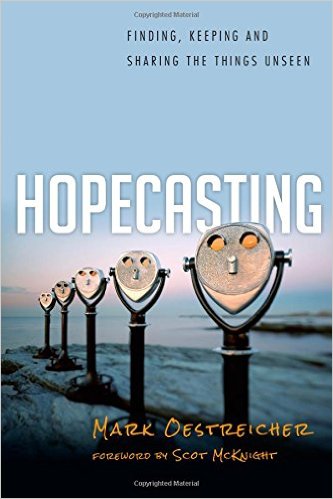 Hopecasting: Finding, Keeping and Sharing the Things Unseen Mark Oestreicher (IVP) $16.00 I raved about this remarkable book last year, suggesting — maybe helpfully, maybe not — that it was, in some ways, a perfect introduction to the work of Walter Brueggemann, who Oestreicher draws on a lot. You may know that Brueggemann is known best for his studies of The Prophetic Imagination and The Hopeful Imagination. More recently, you should know his Reality, Grief, Hope: Three Urgent Prophetic Tasks.) All of these are relevant in this “resurrectionary reading” mode — offering profound hope, subversively profound hope. In Hopecasting Mark O wonders “why some people are so full of hope while many of us struggle to get past the snooze alarm?” Kenda Creasy Dean calls it “part memoir, part mentor, part prayer for the journey.” There is nothing cheap about this, though — this is substantive, thick, sturdy hope. Gary Haugen (of IJM) says “Mark Oestreicher offers deep encouragement for those of us who have ever struggled to cultivate transformative hope in hard places.”
Hopecasting: Finding, Keeping and Sharing the Things Unseen Mark Oestreicher (IVP) $16.00 I raved about this remarkable book last year, suggesting — maybe helpfully, maybe not — that it was, in some ways, a perfect introduction to the work of Walter Brueggemann, who Oestreicher draws on a lot. You may know that Brueggemann is known best for his studies of The Prophetic Imagination and The Hopeful Imagination. More recently, you should know his Reality, Grief, Hope: Three Urgent Prophetic Tasks.) All of these are relevant in this “resurrectionary reading” mode — offering profound hope, subversively profound hope. In Hopecasting Mark O wonders “why some people are so full of hope while many of us struggle to get past the snooze alarm?” Kenda Creasy Dean calls it “part memoir, part mentor, part prayer for the journey.” There is nothing cheap about this, though — this is substantive, thick, sturdy hope. Gary Haugen (of IJM) says “Mark Oestreicher offers deep encouragement for those of us who have ever struggled to cultivate transformative hope in hard places.”
I like the Texan recording artist David Crowder’s blurb on the back:
Oestreicher redefines hope, or, better yet, pulls us back to a workable set of postures for receiving hope. This book reminds us that hope is a beautiful gift, an influx of Jesus into our dark and dry souls.
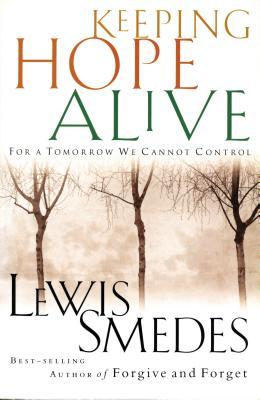 Keeping Hope Alive For a Tomorrow We Cannot Control Lewis Smedes (Thomas Nelson Publishers) $13.98 Smedes was an important figure in the life of one of my best friends who studied under him, and he was the very first person who I knew arranged a book in light of four themes — creation, fall, redemption, restoration (see his Sex for Christians.) He has written about ethics, about forgiveness, about union with Christ, about the ten commandments and about promises for ordinary people; I think I have read every book he published. He was a remarkable person and his teachings moved me deeply. (As did his memoir My God and I: A Spiritual Memoir) that came out right after his untimely death in late 2002.)
Keeping Hope Alive For a Tomorrow We Cannot Control Lewis Smedes (Thomas Nelson Publishers) $13.98 Smedes was an important figure in the life of one of my best friends who studied under him, and he was the very first person who I knew arranged a book in light of four themes — creation, fall, redemption, restoration (see his Sex for Christians.) He has written about ethics, about forgiveness, about union with Christ, about the ten commandments and about promises for ordinary people; I think I have read every book he published. He was a remarkable person and his teachings moved me deeply. (As did his memoir My God and I: A Spiritual Memoir) that came out right after his untimely death in late 2002.)
This one is loaded with common sense and is exceptionally down to Earth, offering deeply Christian wisdom in nice prose that is not off-putting or odd. It is an old favorite of mine. Keeping Hope Alive… shows how to “develop hope-building habits” and how to “discern false hope from true hope.” He reminds us to trust God and guides us to access God’s “hope-giving Spirit.” Smedes explains his ideas about prioritizing your hopes (fascinating) and, of course, how to face the worst without loosing hope. In order words, it really is a very wise, pleasant, helpful guide to this amazing gift that can “fuel our dreams, lighten our spirits, and lift us out of despair.” Highly recommended for anyone who likes good books, or who needs help maintaining Christian hope.
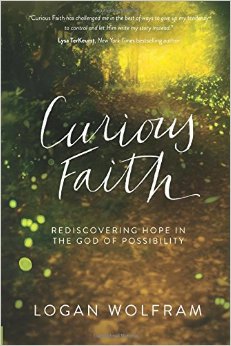 Curious Faith: Rediscovering Hope in the God of Possibility Logan Wolfram (David C. Cook) $17.99 This book is written especially to and for women, and in it Ms Wolfram chats as a friend, an honest friend, inviting readers to be open-minded, curious, eager to unfold more as life-long learners. Her own willingness to entertain the risks of hope, leaning into life in this particular way, came from the death of an unborn child which she describes in a raw first chapter. Can we be curious about how things might be — enough to allow God to write our story? Can we long for more of God in ways that bring meaning and joy, not obsession or unhealthy religion? With endorsements from well-known, contemporary evangelical women writers such as Ann Voskamp and Emily Wierenga and Lysa TerKeurst, Curious Faith will appeal to many, I think.
Curious Faith: Rediscovering Hope in the God of Possibility Logan Wolfram (David C. Cook) $17.99 This book is written especially to and for women, and in it Ms Wolfram chats as a friend, an honest friend, inviting readers to be open-minded, curious, eager to unfold more as life-long learners. Her own willingness to entertain the risks of hope, leaning into life in this particular way, came from the death of an unborn child which she describes in a raw first chapter. Can we be curious about how things might be — enough to allow God to write our story? Can we long for more of God in ways that bring meaning and joy, not obsession or unhealthy religion? With endorsements from well-known, contemporary evangelical women writers such as Ann Voskamp and Emily Wierenga and Lysa TerKeurst, Curious Faith will appeal to many, I think.
I really liked the moving foreword by central Pennsylvania author Sarah Mae who assures us that
Logan is one of the most authentic, generous, faithful, open-the-door-wide-to-possibility souls I know. She is a gift, and her hard-fought wisdom words are a gift to us all.
Sarah continues, that, “mostly, she learned to curiously pursue the unfolding of hope.” Now that’s a resurrectionary phrase, isn’t it? Nice.
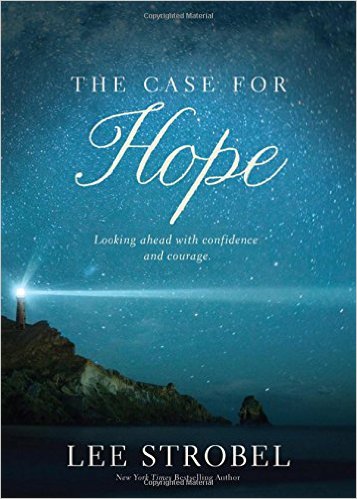 The Case for Hope: Looking Ahead with Confidence and Courage Lee Strobel (Zondervan) $14.99 I really like Lee Strobel and his brand of storytelling, testifying to the goodness of the gospel, and candid questioning — he was a hardscrabble Chicago investigative reporter, after all — has always made him a good, entertaining, and edifying read. This small book is designed as a gift book — some nice color ink inside, some handsome pages, but also with plenty of fabulous stories and very solid content. As it says on the back “Hope is the inextinguishable flicker God ignites in our souls…when we are surrounded by utter darkness.” So where do we find that kind of flicker? What is the reason for such a hope? Part encouragement, part apologetics, part 30-day journey journal, this compact hardback is a very nice book to give for those who don’t read super heavy stuff or want something to inspire.
The Case for Hope: Looking Ahead with Confidence and Courage Lee Strobel (Zondervan) $14.99 I really like Lee Strobel and his brand of storytelling, testifying to the goodness of the gospel, and candid questioning — he was a hardscrabble Chicago investigative reporter, after all — has always made him a good, entertaining, and edifying read. This small book is designed as a gift book — some nice color ink inside, some handsome pages, but also with plenty of fabulous stories and very solid content. As it says on the back “Hope is the inextinguishable flicker God ignites in our souls…when we are surrounded by utter darkness.” So where do we find that kind of flicker? What is the reason for such a hope? Part encouragement, part apologetics, part 30-day journey journal, this compact hardback is a very nice book to give for those who don’t read super heavy stuff or want something to inspire.
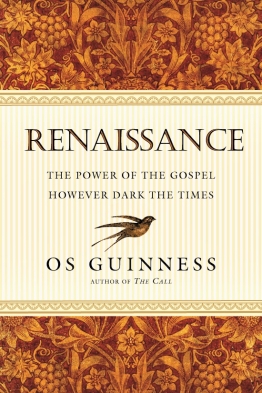 Renaissance: The Power of the Gospel However Dark the Times Os Guinness (IVP) $16.00 Although this book came out two years ago, it is needed now more than ever, and calls us to realize that “no matter how dark the times” we who believe the first things of the gospel must rely on God’s own power to transform the culture around us. Is there hope for societal redemption and renewal? Yes, we must take up efforts to reverse the inroads of secularization and respond well to our pluralizing world. And, yes (as it says on the back) “The Christian faith has transformed cultures and civilizations, demonstrating God’s goodness, beauty, and truth through art and literature, science and medicine, philosophy and social justice.” The explanation of this book continues,
Renaissance: The Power of the Gospel However Dark the Times Os Guinness (IVP) $16.00 Although this book came out two years ago, it is needed now more than ever, and calls us to realize that “no matter how dark the times” we who believe the first things of the gospel must rely on God’s own power to transform the culture around us. Is there hope for societal redemption and renewal? Yes, we must take up efforts to reverse the inroads of secularization and respond well to our pluralizing world. And, yes (as it says on the back) “The Christian faith has transformed cultures and civilizations, demonstrating God’s goodness, beauty, and truth through art and literature, science and medicine, philosophy and social justice.” The explanation of this book continues,
Christians may yet change the world again — if we answer the call to a new Christian renaissance that challenges the darkness with the hope of Christ. So have courage. Take heart. And let a thousand flowers blooms!
I love the blurb on the back by Becky Pippert, a good friend of Os Guinness and his wife, (who, by the way, herself has written a wonderful book entitled Hope Has Its Reasons) who says,
“no other writer I know offers such a rich background of astute cultural analysis combined with a deep understanding of history. I finished this book feeling a deep sense of hope.”
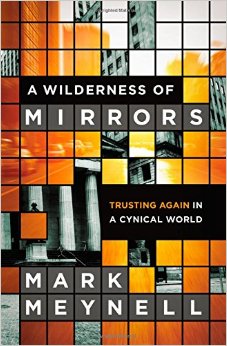 A Wilderness of Mirrors: Trusting Again in a Cynical World Mark Meynell (Zondervan) $18.99 I think that being taken up in the God-drenched experience of “all things new” means a lot of things. As I’ve recommended in this list we should ponder the realities of the resurrection itself, the implications of Christ’s defeat of evil, the way in which God’s grace and mercy and forgiveness sets us free, free to live in world made new. What does that mean, what does it look like? The other books on this list will help you be a person of resurrection, a person of hope. If, that is — and for younger readers, especially, this may be a big “if” — if you don’t fall for the understandable way out of jadedness and cynicism. Why are we in this “whatever” world of superficial distractions and hip irony? In this brilliant book — may I suggest it rises to the level of sheer genius without you rolling your eyes in distrust? — author Mark Meynell explains the implications of the breakdown in trust in many social spheres, and how that impacts us all. Having been mislead by authorities and institutions, we are stuck in a deep malaise. It is good to have him walk us through this, getting a bit of distance from the “mirrors” and being given a gift of clearer sight.
A Wilderness of Mirrors: Trusting Again in a Cynical World Mark Meynell (Zondervan) $18.99 I think that being taken up in the God-drenched experience of “all things new” means a lot of things. As I’ve recommended in this list we should ponder the realities of the resurrection itself, the implications of Christ’s defeat of evil, the way in which God’s grace and mercy and forgiveness sets us free, free to live in world made new. What does that mean, what does it look like? The other books on this list will help you be a person of resurrection, a person of hope. If, that is — and for younger readers, especially, this may be a big “if” — if you don’t fall for the understandable way out of jadedness and cynicism. Why are we in this “whatever” world of superficial distractions and hip irony? In this brilliant book — may I suggest it rises to the level of sheer genius without you rolling your eyes in distrust? — author Mark Meynell explains the implications of the breakdown in trust in many social spheres, and how that impacts us all. Having been mislead by authorities and institutions, we are stuck in a deep malaise. It is good to have him walk us through this, getting a bit of distance from the “mirrors” and being given a gift of clearer sight.
The back cover isn’t as eloquent as the book itself (and I am afraid I didn’t speak of it adequately in my previous BookNotes review, although I did rave), but here is their explanation:
In A Wilderness of Mirrors Mark Meynell explores the roots of the discord and alienation
that mark our society, but he also outlines a gospel-based reason for
hope. An astute social observer with a pastor s spiritual sensitivity,
Meynell grounds his antidote on four bedrocks of the Christian faith:
human nature, Jesus, the church, and the story of God’s action in the
world.Ultimately hopeful, A Wilderness of Mirrors calls
Christians to rediscover the radical implications of Jesus s life and
message for a disillusioned world, a world more than ever in need of his
trustworthy goodness.
Maynell is well suited for writing this book. He has lived in Europe and in Africa. His evangelical faith (mentored by John Stott) allows him to speak passionately about the basics of the gospel and about the contours of culture. For instance, in one chapter he notes the “personal cost of mistrust” which he describes as alienation and finally loneliness. (He was a pastor, after all.) But in other chapters he is doing fine cultural criticism and incisive social critique. His “hope for a broken world” chapters are solid and, yes, hopeful. This is a very good book and I very highly recommend it. You will be invited into a better story than the damages caused by our dubious culture and a better story than many churches proclaim. He offers the richness of the gospel story — which allows us, as he puts it, to “relish a true ending.” That’s hope!
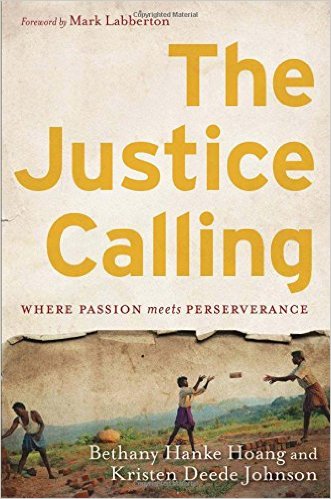 The Justice Calling: Where Passion Meets Perseverance Bethany Hanke Hoang & Kristen Deeded Johnson (Brazos Press) $19.99 Maybe you saw our earlier reviews of this where we commended it as one of the best recent studies expressing the Biblical and theological basis for concern about social justice. Many resurrectionary Christians believe God is making all things new, and certainly that includes a public faith, a commitment tot he common good, a passion to work for the suffering and oppressed. This book says on the back, “Root your passion for justice in persevering hope.”
The Justice Calling: Where Passion Meets Perseverance Bethany Hanke Hoang & Kristen Deeded Johnson (Brazos Press) $19.99 Maybe you saw our earlier reviews of this where we commended it as one of the best recent studies expressing the Biblical and theological basis for concern about social justice. Many resurrectionary Christians believe God is making all things new, and certainly that includes a public faith, a commitment tot he common good, a passion to work for the suffering and oppressed. This book says on the back, “Root your passion for justice in persevering hope.”
Persevering hope. That’s what I’m talking about here after Easter: how to keep on keeping on long after the cause de jour moves on, long after the initial energy drains, long after the good feelings of helping others gives way to a hard realism about how messy it all is, this changing the world business. That takes a deep and abiding “vision of vocation” as Steve Garber puts it, which, it seems, offers the virtue of steadfastness, maybe even hopefulness.
Dan Allender calls this a “glorious book” and that, too, is a good example of hopefulness, that such a book would garner such good praise. Lynne Hybels has written nicely about “the thread that stitches this whole book together: the possibility and promise of persevering hope.” Yes.
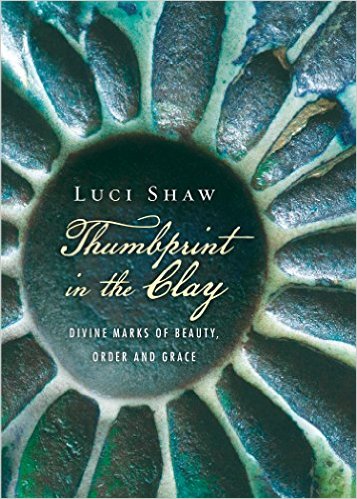 Thumbprint in the Clay: Divine Marks of Beauty, Order and Grace Luci Shaw (IVP Books) $17.00 One of these days I might do a BookNotes blog books about a genre of books I call “the spirituality of the ordinary.” We have a lot, about seeing God’s beauty, sensing God’s presence, and experiencing daily life knowing that the Risen Christ is ever-present.
Thumbprint in the Clay: Divine Marks of Beauty, Order and Grace Luci Shaw (IVP Books) $17.00 One of these days I might do a BookNotes blog books about a genre of books I call “the spirituality of the ordinary.” We have a lot, about seeing God’s beauty, sensing God’s presence, and experiencing daily life knowing that the Risen Christ is ever-present.
This sort of “down to Earth” faith that honors God’s presence and power in the mundane is a real Easter theme, I think: after the resurrection, of course, Jesus went to the beach and had a breakfast of fish. The hearts of the discouraged disciples “burned within them” while Jesus taught about himself from the Old Testament, but it wasn’t until they blessed and broke bread that their eyes were opened to the His Divine presence among them. And so, it seems to me a major aspect of post-Easter resurrectionary reading would be to learn the art of discerning God’s hand in God’s handiwork, what Luci Shaw calls “the thumbprint in the clay.” Call it practicing the presence of God or sanctifying the ordinary, I think we can benefit much from reading books about that. This brand new one is beautifully written and full of wonder, as such a book should be, so I wanted to list it here as a sign of hope, a gift of shalom, a result of the realities of Easter.
I hope you know the wonderful writer, Luci Shaw, who has spent a
lifetime working in publishing, offering many volumes of poems and good
books of thoughtful prose. Her most recent nonfiction works have
included books about aging and the spirituality of her own “ascent” (as she puts her own maturity in aging.) She
is an artful and vital author and person we esteem and enjoy, and we hope you do to. She
is one of the best.
This brand
new release that came a few days ago is a rumination on God’s own thumbprint found in all things.
It is, she says, “for me, a singular clue to human identity.” God is, of
course, the creative and ever-creating One. The publicity about the
book reminds us that “We reflect God’s imprint most clearly, perhaps, in
our own creating and appreciation for beauty. A longing for beauty is
inherent to being human.” Is there some sense in which beauty is
redemptive?
Novelist Brett Lott writes,
Luci Shaw is a treasure, and Thumbprints in the Clay shows
us again precisely why: this book is wise beyond measure, the writing
beautiful beyond compare, and its heart a reflection of the one true
God… This is a beautiful, ruminative and necessary book.
Listen to Leslie Leyland Fields, herself a great writer (who works in the Alaskan fishing industry) as she colorfully commends this author and this new book:
Luci has thrown clay upon a wheel yet once more and fashioned it into a delightful vessel filled with my favorite drink: the ambrosia of art, faith, and creativity. Yes, I am besotted: but who can turn away from the poetry of a life lived so beautifully in service to God.

Although Kreglinger is a contemplative and deeply spiritual writer, this really is a book about wine — in the Bible, in church, in culture, and on our own daily tables and special occasions. It isn’t every Christian book that has such great endorsements from such esteemed foodie writers as Alice Waters (owner of Chez Panisse in Berkeley) who writes,
Gisela Kreglinger writes with good humor and real piety about the transformative power of good wine. This is a thoughtful, prayerful, wide-ranging book, reminding us on every page that spirituality and gastronomy are inextricably linked. I will not soon forget Kreglinger’s theologically informed and deeply perceptive analysis of Babette’s Feast, one of my favorite stories.
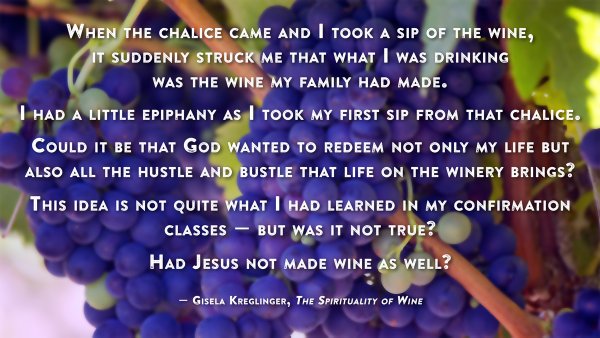
Alice Canlis of the famed Canlis Restaurant in Seattle says, beautifully,
I wept upon reading The Spirituality of Wine. Our restaurant has received Wine Spectator’s Grand Award for twenty years, so how is it that I had only tasted the tip of this reality, only touched the knowledge of its gifts? Profound and potent, intertwined with practical and tangible application, this book has completely astonished me. Like an exquisite wine in a bottle, I’ve been transformed from within.
Now that sounds like “resurrectionary reading” to me — potent, astonishing, transformative. Yes, yes, yes. Happy resurrection folks!
BookNotes
DISCOUNT
ANY ITEM MENTIONED
10% off
order here
takes you to the secure Hearts & Minds order form page
just tell us what you want
inquire here
if you have questions or need more information
just ask us what you want to know
Hearts & Minds 234 East Main Street Dallastown, PA 17313 717-246-3333

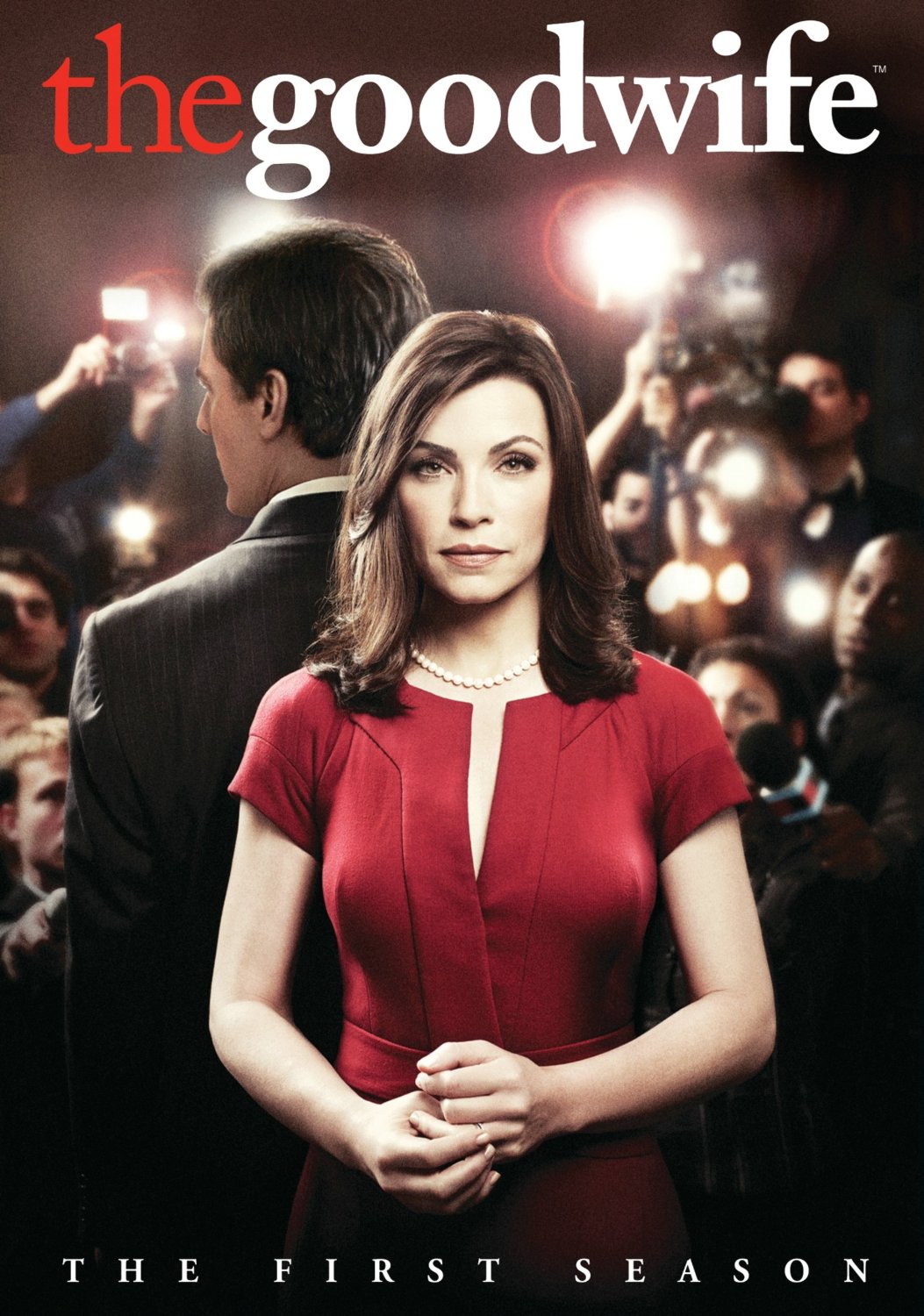 See our order form link, below. All books mentioned, 10% off.
See our order form link, below. All books mentioned, 10% off.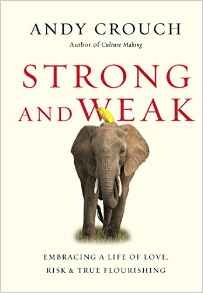
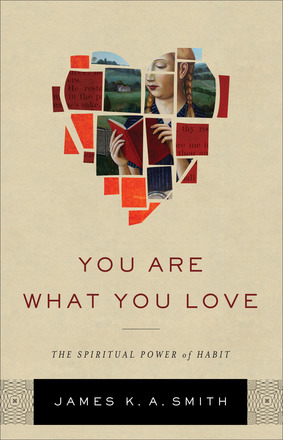 release of YAWYL; the second also included a bit more of my take on how Smith came this recent project and why I care so much about it, and then dove into a fuller review, chapter by chapter. We’ve really appreciated that some have shared this review among their own friends and tried to generate some sales for us. It is our joy to tell people about these kinds of books and hope that one of the things people desire, one of the habits that shape their wants (to use Smith’s phrases) is spending money at places they believe in.
release of YAWYL; the second also included a bit more of my take on how Smith came this recent project and why I care so much about it, and then dove into a fuller review, chapter by chapter. We’ve really appreciated that some have shared this review among their own friends and tried to generate some sales for us. It is our joy to tell people about these kinds of books and hope that one of the things people desire, one of the habits that shape their wants (to use Smith’s phrases) is spending money at places they believe in.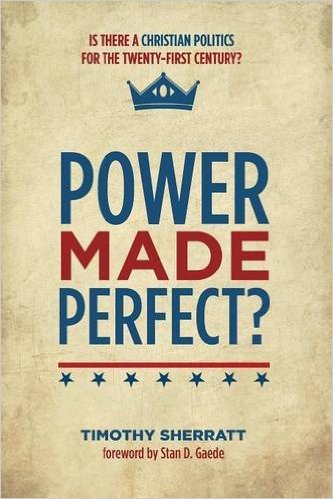
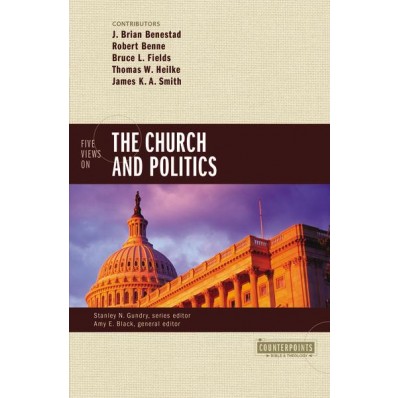
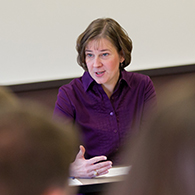
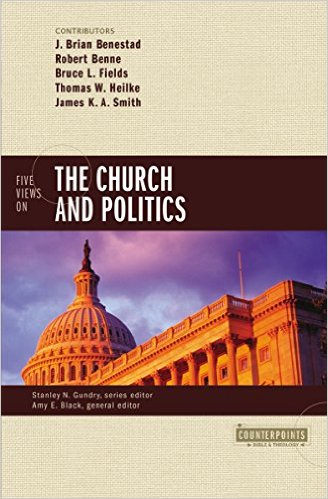 Five Views on The Church and Politics will thrill church history fans and will be a boon to any of us who long for greater ecumenical awareness and inter-denominational dialogue. I think that all but the most focused politicos will find its broad themes — how various church traditions have related to the world, to culture, to public life — a great place to start (rather than digging too deeply into nuances of political theory as such which it mostly does not do.) For some of us we might wish for a bit more specificity about politics and the messiness of voting well, party involvement, policy proposals and such, but for most of us this big-picture view will bring us up to speed quite nicely.
Five Views on The Church and Politics will thrill church history fans and will be a boon to any of us who long for greater ecumenical awareness and inter-denominational dialogue. I think that all but the most focused politicos will find its broad themes — how various church traditions have related to the world, to culture, to public life — a great place to start (rather than digging too deeply into nuances of political theory as such which it mostly does not do.) For some of us we might wish for a bit more specificity about politics and the messiness of voting well, party involvement, policy proposals and such, but for most of us this big-picture view will bring us up to speed quite nicely.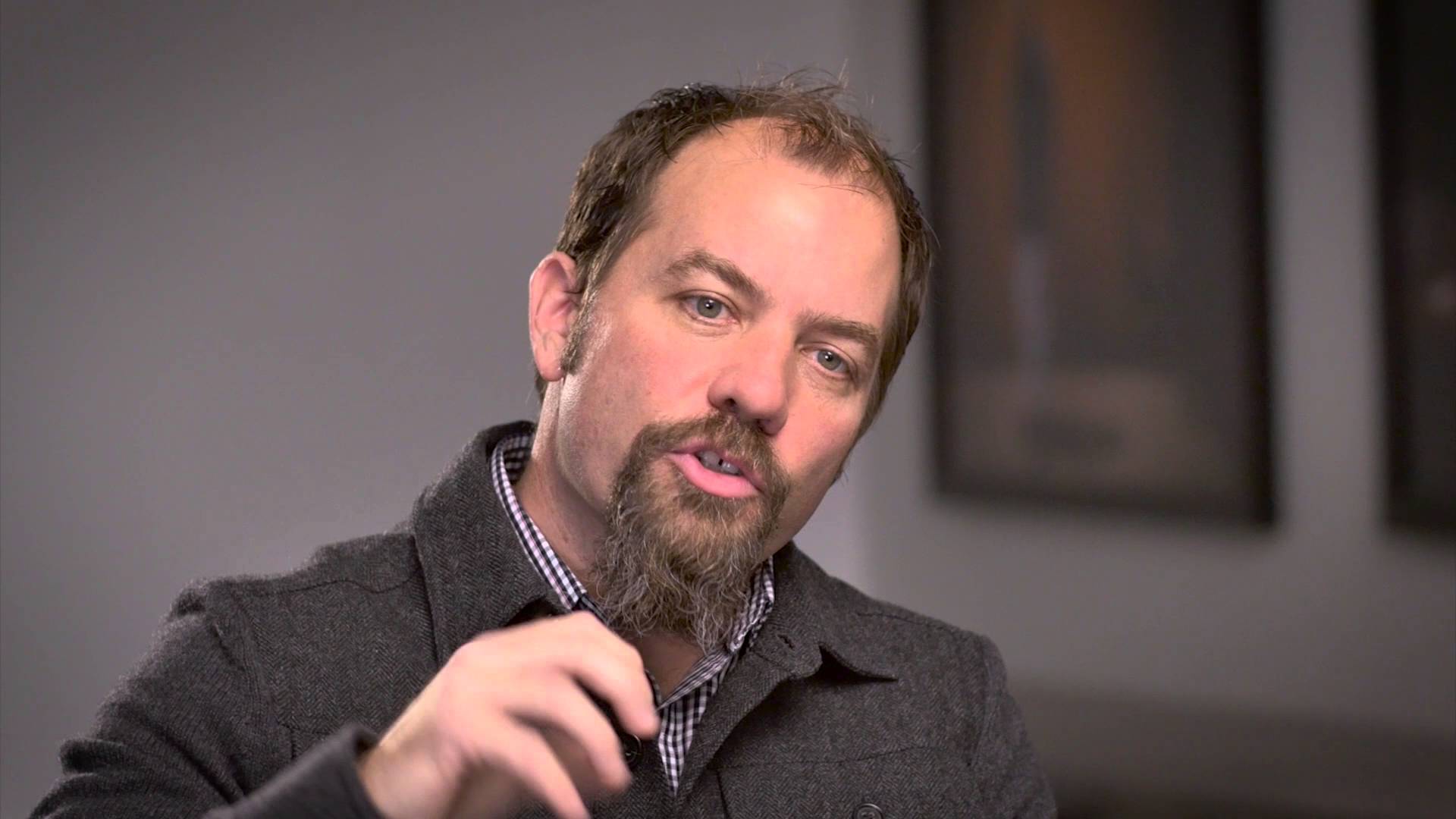
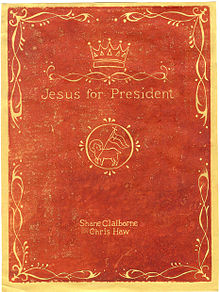 sort of wish the Anabaptist voice had a bit of the passion and prophetic edge of, say, Shane Claiborne’s Jesus for President: Politics for Ordinary Radicals (Zondervan; $16.99) and that the Roman Catholic scholar, alongside his good explanation of natural law, might have talked more energetically about the consistent life views of the US Bishops. Indeed, it was Smith who noticed that Professor Benestad didn’t talk at all about the historic reading of Pope Leo XIII’s famous Rerum Novarum that has lead Roman Catholics to be generally supportive of labor and labor unions. Smith observes, politely, that Benestad offers a “selective” reading of Catholic Social Teaching. And while Dr. Bruce Fields, the black theologian and professor, cited many great sources (such as Cheryl J. Sanders, Renita Weems, Cain Hope Felder, the essential J. Deotis Roberts, and Peter Paris) it would have been interesting to have this dialogue with somebody like a James Cone or Cornel West or someone more overtly connected to the historic civil rights movement. To put a better spin on my small frustration I can assure you that the book is exceedingly fair, civil, no-nonsense, studious and is hardly contentious at all.
sort of wish the Anabaptist voice had a bit of the passion and prophetic edge of, say, Shane Claiborne’s Jesus for President: Politics for Ordinary Radicals (Zondervan; $16.99) and that the Roman Catholic scholar, alongside his good explanation of natural law, might have talked more energetically about the consistent life views of the US Bishops. Indeed, it was Smith who noticed that Professor Benestad didn’t talk at all about the historic reading of Pope Leo XIII’s famous Rerum Novarum that has lead Roman Catholics to be generally supportive of labor and labor unions. Smith observes, politely, that Benestad offers a “selective” reading of Catholic Social Teaching. And while Dr. Bruce Fields, the black theologian and professor, cited many great sources (such as Cheryl J. Sanders, Renita Weems, Cain Hope Felder, the essential J. Deotis Roberts, and Peter Paris) it would have been interesting to have this dialogue with somebody like a James Cone or Cornel West or someone more overtly connected to the historic civil rights movement. To put a better spin on my small frustration I can assure you that the book is exceedingly fair, civil, no-nonsense, studious and is hardly contentious at all.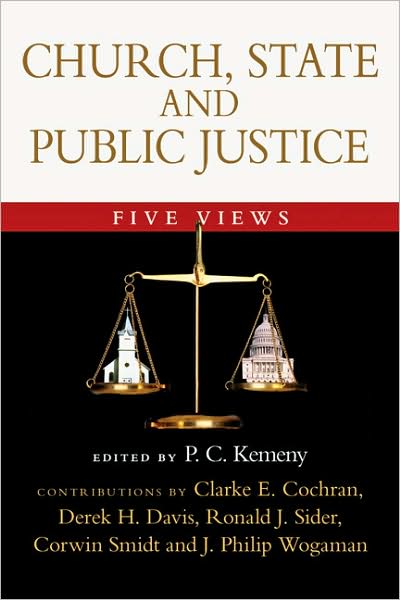
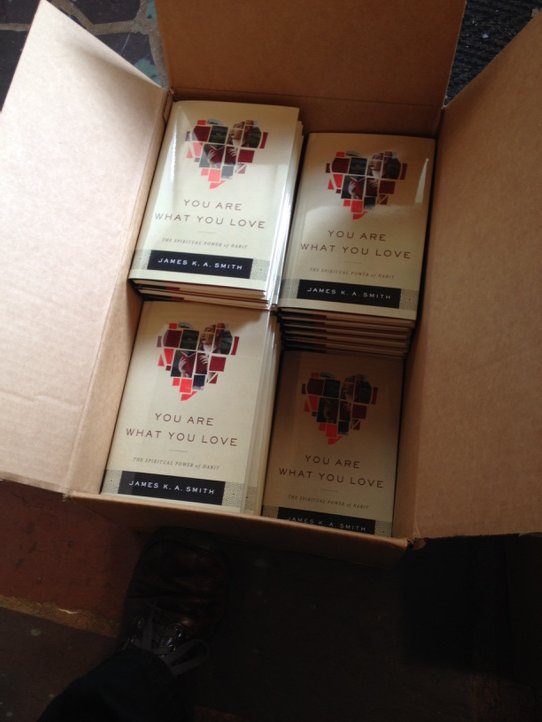 The new book by my friend Jamie Smith has arrived, and we couldn’t be happier. The endorsements on the cover of the nice hardback are stellar. It is doubtlessly one of the best books of the year. Read on.
The new book by my friend Jamie Smith has arrived, and we couldn’t be happier. The endorsements on the cover of the nice hardback are stellar. It is doubtlessly one of the best books of the year. Read on.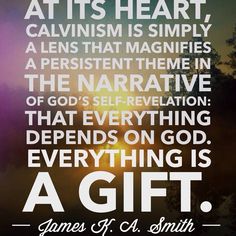
 laziness. This shifted the tone of our faith conversations and our understanding of discipleship towards a more culturally engaged and wholistic vision, a transforming vision. We started using the phrase world-and-life-view, shortened it to worldview and regularly explained how bad ideas (like the pagan Greek notion adopted from Plato by the early church of a big divide between the so-called secular and sacred and the subsequent general disregard for culture, work, the arts and sciences) could deform our discipleship and harm our witness in the world.
laziness. This shifted the tone of our faith conversations and our understanding of discipleship towards a more culturally engaged and wholistic vision, a transforming vision. We started using the phrase world-and-life-view, shortened it to worldview and regularly explained how bad ideas (like the pagan Greek notion adopted from Plato by the early church of a big divide between the so-called secular and sacred and the subsequent general disregard for culture, work, the arts and sciences) could deform our discipleship and harm our witness in the world.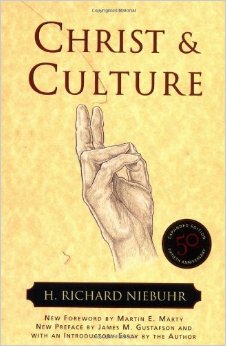
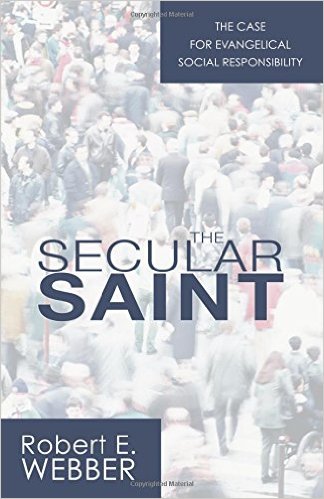 ran with that taxonomy – dualists of the right were fundamentalists who despised culture; their faith often opposed Christian social concern, while more liberal dualists accommodated themselves to culture; the Reformed “Christ transforming culture” option gave us the most helpful posture: in but not of the world, eager to make a difference with holy relevance. As a book by Richard Mouw put it in those years we were “called to holy worldliness” and as another by Robert Webber put it we were to be “secular saints.” Some of my very best friends in the CCO wrote a book (now long out of print) called, simply, All of Life Redeemed.
ran with that taxonomy – dualists of the right were fundamentalists who despised culture; their faith often opposed Christian social concern, while more liberal dualists accommodated themselves to culture; the Reformed “Christ transforming culture” option gave us the most helpful posture: in but not of the world, eager to make a difference with holy relevance. As a book by Richard Mouw put it in those years we were “called to holy worldliness” and as another by Robert Webber put it we were to be “secular saints.” Some of my very best friends in the CCO wrote a book (now long out of print) called, simply, All of Life Redeemed.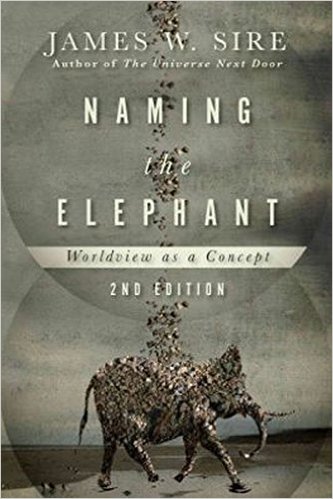 (For the record, although beyond the scope of my overview of and run-up to Smith’s new book, I think this telling is somewhat overstated. Some odd-ball right-wing dominionists and some interested in evidentialist apologetics started using worldview language, but many who used it – from James Sire to Nancy Pearcey, Al Wolters to Sylvia Keesmaat, Mark Bertrand to NT Wright – mostly did not reduce the notion of a deeply held, often subconscious heart perspective, shaping how we “lean into life” as Sire put it, to mere ideas. Suggesting this is, in my view, a small mis-step made by Andy Crouch in his splendid Culture Making and it is a trope in Smith (especially in Desiring the Kingdom) that ought to be clarified somewhere along the line. In recent years, James Sire attempted to clarify the notion of worldview as a concept in a book called Naming the Elephant, which is worth reading. I’ve already cited in that previous BookNotes the collection about all this called After Worldview published by Dordt College Press. In any event, there is a huge difference between, say, James Olthius (and his 1985 Christian Scholars Review article “
(For the record, although beyond the scope of my overview of and run-up to Smith’s new book, I think this telling is somewhat overstated. Some odd-ball right-wing dominionists and some interested in evidentialist apologetics started using worldview language, but many who used it – from James Sire to Nancy Pearcey, Al Wolters to Sylvia Keesmaat, Mark Bertrand to NT Wright – mostly did not reduce the notion of a deeply held, often subconscious heart perspective, shaping how we “lean into life” as Sire put it, to mere ideas. Suggesting this is, in my view, a small mis-step made by Andy Crouch in his splendid Culture Making and it is a trope in Smith (especially in Desiring the Kingdom) that ought to be clarified somewhere along the line. In recent years, James Sire attempted to clarify the notion of worldview as a concept in a book called Naming the Elephant, which is worth reading. I’ve already cited in that previous BookNotes the collection about all this called After Worldview published by Dordt College Press. In any event, there is a huge difference between, say, James Olthius (and his 1985 Christian Scholars Review article “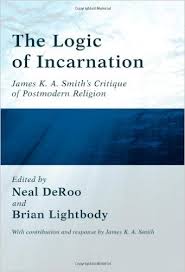 heavy conference – bracing, contested, important — on this very matter and a whole academic book was edited in 2008 by Neal DeRoo and Brian Lightbody dedicated to Smith’s views, The Logic of Incarnation: James K.A. Smith’s Critique of Postmodern Religion.) Walsh, Midddleton and Smith were not the only ones in evangelicalism to write favorably of postmodernism, but they were pioneering and prescient. They started to write more about the role of the heart and the imaginative stories that conscript us into visions of the good life. Perhaps we should talk more about stories and visions, and less about worldviews and ideas.
heavy conference – bracing, contested, important — on this very matter and a whole academic book was edited in 2008 by Neal DeRoo and Brian Lightbody dedicated to Smith’s views, The Logic of Incarnation: James K.A. Smith’s Critique of Postmodern Religion.) Walsh, Midddleton and Smith were not the only ones in evangelicalism to write favorably of postmodernism, but they were pioneering and prescient. They started to write more about the role of the heart and the imaginative stories that conscript us into visions of the good life. Perhaps we should talk more about stories and visions, and less about worldviews and ideas.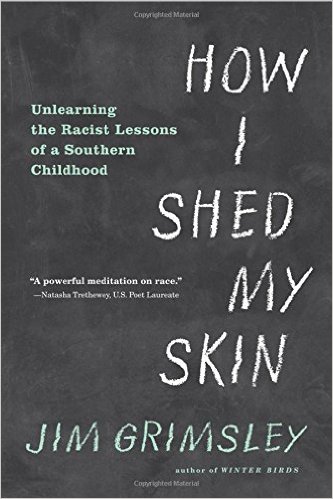 My Skin: Unlearning the Racist Lessons of a Southern Childhood. Grimsley grew up in rural North Carolina, one of the students at one of the schools in the late 60s that were the first to become racially integrated. Without excessive flourish Grimsley described how he was born and bred to be a racist, by otherwise good people in his small, religious town. While most frowned on the public usage of the “n-word” (it was considered “course”) and several of the Klansman his parents knew were disrespected for their excessive violence, he, nonetheless, was unknowingly conscripted into a culture of white supremacy. The goal of his captivating memoir was to ponder how he, over time, “shed the skin” with which he was raised. How does one’s heart become taken with bigotry and how does one unlearn such disordered prejudices? Although the book is not heavy-handed, it seemed to me a spot-on parallel to one of Mr. Smith’s central arguments, namely, that we are not primarily or firstly “thinking things” and therefore, “thinking-thingism” (one of the very few clumsy phrases in the book) will not do if we desire to deepen our discipleship and live more consistently Christian lives.
My Skin: Unlearning the Racist Lessons of a Southern Childhood. Grimsley grew up in rural North Carolina, one of the students at one of the schools in the late 60s that were the first to become racially integrated. Without excessive flourish Grimsley described how he was born and bred to be a racist, by otherwise good people in his small, religious town. While most frowned on the public usage of the “n-word” (it was considered “course”) and several of the Klansman his parents knew were disrespected for their excessive violence, he, nonetheless, was unknowingly conscripted into a culture of white supremacy. The goal of his captivating memoir was to ponder how he, over time, “shed the skin” with which he was raised. How does one’s heart become taken with bigotry and how does one unlearn such disordered prejudices? Although the book is not heavy-handed, it seemed to me a spot-on parallel to one of Mr. Smith’s central arguments, namely, that we are not primarily or firstly “thinking things” and therefore, “thinking-thingism” (one of the very few clumsy phrases in the book) will not do if we desire to deepen our discipleship and live more consistently Christian lives.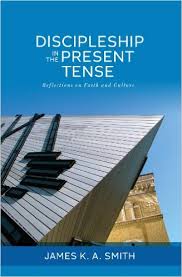 an (appropriate) structure/form from one arena (my pun intended) is inappropriately imported into another. That is, it is little wonder that those who grew up with “worship leaders” rocking out with lights and amps performing with cool affectations aping what they learned from rock stars for our consumption in worship experiences end up leaving a church if the musical stylings change or their favorite worship leader moves on. They’ve been taught – without any words but by the structures and forms and ethos and unspoken narratives, rituals, symbols – that worship is for me and an expression of my own heart and is to be taken in the same way I consume the experience of a big rock show. The “lessons” about what worship is and what it is about and how to participate have been “caught” no matter what is really taught. Even if a pastor or church school teacher verbally instructs more nuanced and proper views of worship, the ritual of how worship is experienced trumps. Smith’s dear letter in that book is much clearer and better written than my quick summary here and I commend it. It’s important for what it explores, but I mention it here as another example of the sorts of things that matter to him and that inspired YAWYL. We are not “brains on a stick” and our understandings of life usually are captured by stories and myths and values that are embedded in rituals, habit-forming liturgies.
an (appropriate) structure/form from one arena (my pun intended) is inappropriately imported into another. That is, it is little wonder that those who grew up with “worship leaders” rocking out with lights and amps performing with cool affectations aping what they learned from rock stars for our consumption in worship experiences end up leaving a church if the musical stylings change or their favorite worship leader moves on. They’ve been taught – without any words but by the structures and forms and ethos and unspoken narratives, rituals, symbols – that worship is for me and an expression of my own heart and is to be taken in the same way I consume the experience of a big rock show. The “lessons” about what worship is and what it is about and how to participate have been “caught” no matter what is really taught. Even if a pastor or church school teacher verbally instructs more nuanced and proper views of worship, the ritual of how worship is experienced trumps. Smith’s dear letter in that book is much clearer and better written than my quick summary here and I commend it. It’s important for what it explores, but I mention it here as another example of the sorts of things that matter to him and that inspired YAWYL. We are not “brains on a stick” and our understandings of life usually are captured by stories and myths and values that are embedded in rituals, habit-forming liturgies.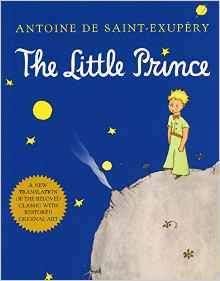 James
James 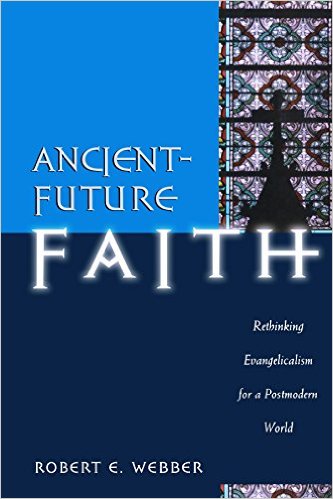
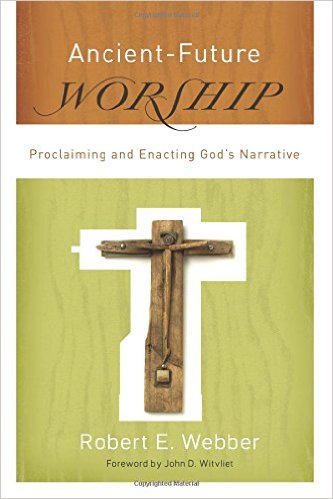
 I don’t know about you, but for many of us, the week before Easter is a time within time, a holy and meaningful time; I try to spend more time in solitude, the Lenten practices (some of which I do not keep well if at all) of spiritual reading, prayer, fasting, and mid-week church services are intensified. I hope you have a faith community that does a Maundy Thursday service, and that you take in Good Friday services. Experiencing in some way the flow and rhythm of Christ’s final week seems essential to our own being well grounded in the passion of Christ, our servant King.
I don’t know about you, but for many of us, the week before Easter is a time within time, a holy and meaningful time; I try to spend more time in solitude, the Lenten practices (some of which I do not keep well if at all) of spiritual reading, prayer, fasting, and mid-week church services are intensified. I hope you have a faith community that does a Maundy Thursday service, and that you take in Good Friday services. Experiencing in some way the flow and rhythm of Christ’s final week seems essential to our own being well grounded in the passion of Christ, our servant King.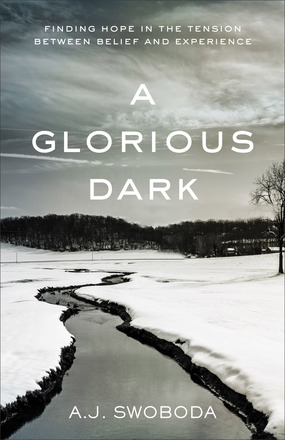 A Glorious Dark: Finding Hope in the Tension Between Belief and Experience A.J. Swoboda (Baker Books) $14.99 SALE PRICE $10.49
A Glorious Dark: Finding Hope in the Tension Between Belief and Experience A.J. Swoboda (Baker Books) $14.99 SALE PRICE $10.49
 The Undoing of Death Fleming Rutledge (Eerdmans) $22.00 OUR SALE PRICE $15.40
The Undoing of Death Fleming Rutledge (Eerdmans) $22.00 OUR SALE PRICE $15.40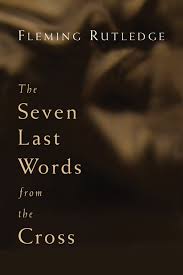 The Seven Last Words from the Cross Fleming Rutledge (Eerdmans) $12.00 OUR SALE PRICE $8.40
The Seven Last Words from the Cross Fleming Rutledge (Eerdmans) $12.00 OUR SALE PRICE $8.40
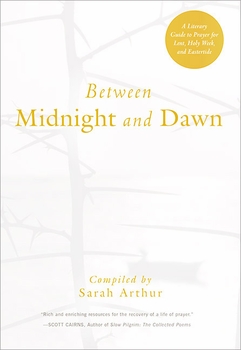 Between Midnight and Dawn: A Literary Guide to Prayer for Lent, Holy Week, and Eastertide compiled by Sarah Arthur (Paraclete Press) $18.99 SALE PRICE $13.29
Between Midnight and Dawn: A Literary Guide to Prayer for Lent, Holy Week, and Eastertide compiled by Sarah Arthur (Paraclete Press) $18.99 SALE PRICE $13.29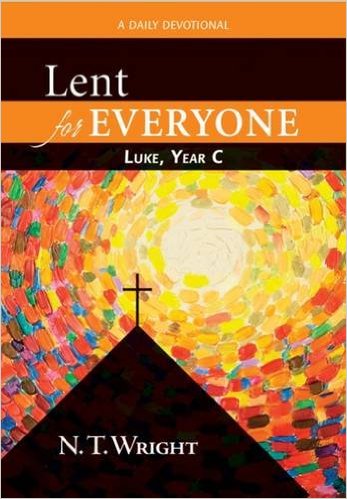 Lent for Everyone: Luke (Year C) N.T. Wright (Westminster/John Knox) $16.00 OUR SALE PRICE $11.20
Lent for Everyone: Luke (Year C) N.T. Wright (Westminster/John Knox) $16.00 OUR SALE PRICE $11.20
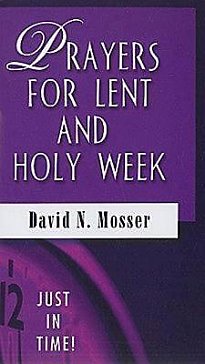 Prayers for Lent and Holy Week David N. Mosser (Abingdon) $12.00 OUR SALE PRICE $8.40
Prayers for Lent and Holy Week David N. Mosser (Abingdon) $12.00 OUR SALE PRICE $8.40
 The Garden, The Curtain and the Cross: The True Story of Why Jesus Died and Rose Again Carl Laferton, illustrated by Cataline Echeverrt (The Good Books Company) $14.99 OUR SALE PRICE $10.49
The Garden, The Curtain and the Cross: The True Story of Why Jesus Died and Rose Again Carl Laferton, illustrated by Cataline Echeverrt (The Good Books Company) $14.99 OUR SALE PRICE $10.49
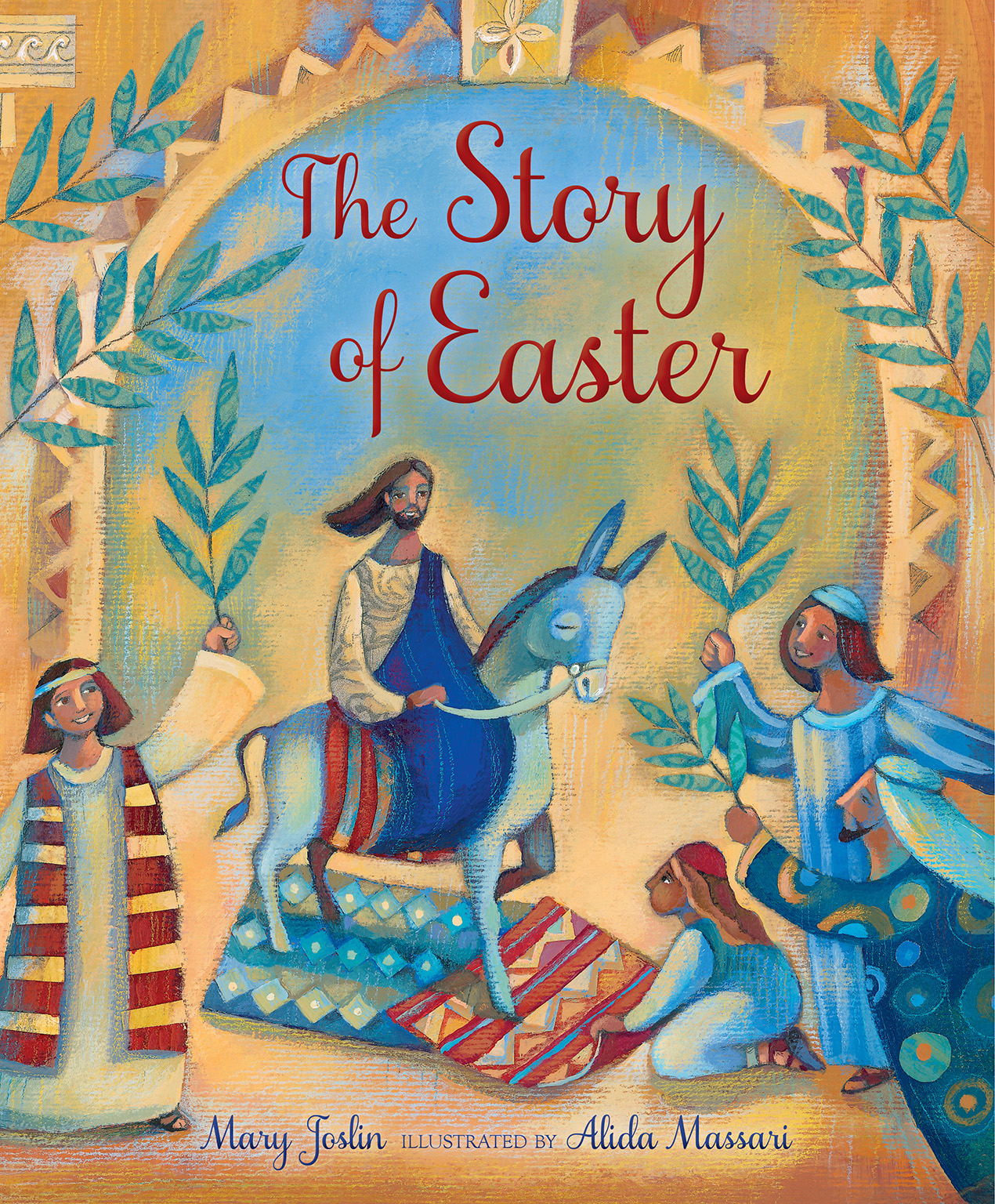 The Story of Easter Mary Joslin illustrated by Alida Massari (Lion Press) $14.99 OUR SALE PRICE $10.49
The Story of Easter Mary Joslin illustrated by Alida Massari (Lion Press) $14.99 OUR SALE PRICE $10.49

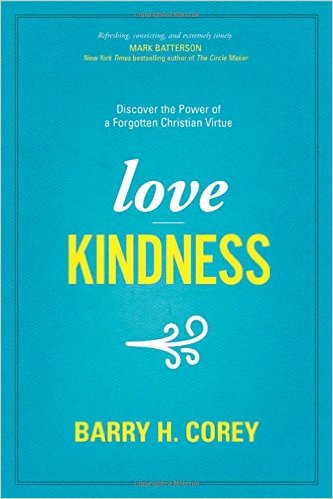 Love Kindness: Discover the Power of a Forgotten Christian Virtue Barry H. Corey (Tyndale) $15.99 When reading an advanced copy of Good Faith which I reviewed a week ago I noticed a footnote to this book that had not yet been released. Kinnaman and Lyons said very good things about it in that footnote and I made a mental note to be sure we had it on order. It came not long ago and, as I expected, it is remarkable. And it has Micah 6:8 printed on the back — the first verse I learned as a kid, my dad’s favorite. There are surprising blurbs on the back from David Wells, a serious-minded, no-nonsense and very careful thinker I great admire, a Distinguished Research Professor at Gordon Conwell, and a long, passionate endorsement by Miroslav Volf. These are impressive signs. Alistair Begg calls Love Kindness “a thought-provoking, heart-stirring challenge to consider kindness as a barometer of a grace-shaped life.” I know some very kind people and admire them. You do too. Maybe we need this book so we can be more like them. The author, by the way, has a PhD in education from Boston College, was a Fulbright scholar and worked with the landless poor in Bangladesh. This looks really, really rich.
Love Kindness: Discover the Power of a Forgotten Christian Virtue Barry H. Corey (Tyndale) $15.99 When reading an advanced copy of Good Faith which I reviewed a week ago I noticed a footnote to this book that had not yet been released. Kinnaman and Lyons said very good things about it in that footnote and I made a mental note to be sure we had it on order. It came not long ago and, as I expected, it is remarkable. And it has Micah 6:8 printed on the back — the first verse I learned as a kid, my dad’s favorite. There are surprising blurbs on the back from David Wells, a serious-minded, no-nonsense and very careful thinker I great admire, a Distinguished Research Professor at Gordon Conwell, and a long, passionate endorsement by Miroslav Volf. These are impressive signs. Alistair Begg calls Love Kindness “a thought-provoking, heart-stirring challenge to consider kindness as a barometer of a grace-shaped life.” I know some very kind people and admire them. You do too. Maybe we need this book so we can be more like them. The author, by the way, has a PhD in education from Boston College, was a Fulbright scholar and worked with the landless poor in Bangladesh. This looks really, really rich. 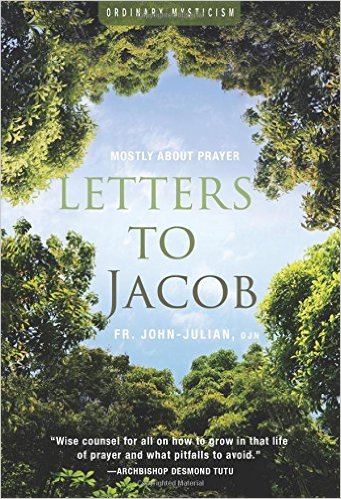 Letters to Jacob: Mostly About Prayer Fr. John-Julian (Paraclete Press) $7.99 This is a very, very small book and I intend to read it devotional here in the second half of Lent. Any title that alludes to Letters to Malcolm by C.S. Lewis, and says “ordinary mysticism” on the cover has to be good! And I hear it really is. Desmond Tutu has a rave on the front saying “Wise counsel for all on how to grow in that life of prayer and what pitfalls to avoid.”
Letters to Jacob: Mostly About Prayer Fr. John-Julian (Paraclete Press) $7.99 This is a very, very small book and I intend to read it devotional here in the second half of Lent. Any title that alludes to Letters to Malcolm by C.S. Lewis, and says “ordinary mysticism” on the cover has to be good! And I hear it really is. Desmond Tutu has a rave on the front saying “Wise counsel for all on how to grow in that life of prayer and what pitfalls to avoid.”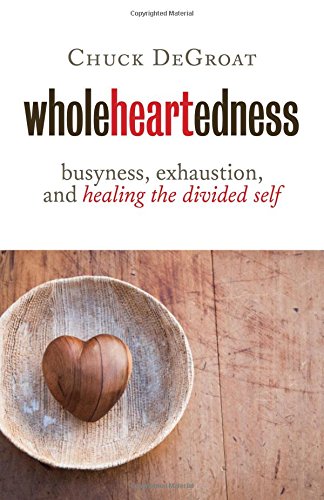 Wholeheartedness: Busyness, Exhaustion, and Healing the Divided Self Chuck DeGroat (Eerdmans) $15.00 We discovered DeGroat a while back, appreciated by many for his helping to found the Newbigin House of Studies in San Francisco, but who is now a prof of pastoral care at the RCA’s Western Theological Seminary in Holland Michigan and who also has a counseling practice. He wrote the wonderfully interesting and beautiful book called Leaving Egypt: Finding God in WIlderness Places and then a most helpful and very thoughtfulToughest People to Love: How to Understand, Lead, and Love the Difficult People in Your Life Including Yourself. This new one looks remarkable — just the footnotes alone show how wide of a reader DeGroat is, citing everybody from evangelical neuroscientist Curt Thompson to poet Mary Oliver, from David Letterman to Thomas Merton.
Wholeheartedness: Busyness, Exhaustion, and Healing the Divided Self Chuck DeGroat (Eerdmans) $15.00 We discovered DeGroat a while back, appreciated by many for his helping to found the Newbigin House of Studies in San Francisco, but who is now a prof of pastoral care at the RCA’s Western Theological Seminary in Holland Michigan and who also has a counseling practice. He wrote the wonderfully interesting and beautiful book called Leaving Egypt: Finding God in WIlderness Places and then a most helpful and very thoughtfulToughest People to Love: How to Understand, Lead, and Love the Difficult People in Your Life Including Yourself. This new one looks remarkable — just the footnotes alone show how wide of a reader DeGroat is, citing everybody from evangelical neuroscientist Curt Thompson to poet Mary Oliver, from David Letterman to Thomas Merton.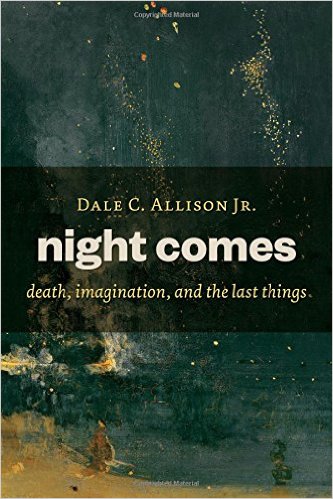 Night Comes: Death, Imagination, and the Last Things Dale C. Allison, Jr. (Eerdmans) $18.00 A very, very smart friend of mine, a world-travelled, small-church Presbyterian pastor who is remarkably well read, has confided in me that Dale Allison is one of the smartest and most amazing people he’s ever met. Those of us that have heard him or worked with him know this is true: he is an eloquent and interesting writer, luminous at times, even. He has written major scholarly works, and a few probing, moving meditations, too (such as The Luminous Dusk: Finding God in the Deep Still Places.) Blurbs on the back of this new book include extravagant endorsements by John Burgess (Pittsburgh Theological Seminary), the deeply thoughtful Orthodox scholar and writer David Bentley Hart, and Thomas Long, the well known preacher and prof from Candler.
Night Comes: Death, Imagination, and the Last Things Dale C. Allison, Jr. (Eerdmans) $18.00 A very, very smart friend of mine, a world-travelled, small-church Presbyterian pastor who is remarkably well read, has confided in me that Dale Allison is one of the smartest and most amazing people he’s ever met. Those of us that have heard him or worked with him know this is true: he is an eloquent and interesting writer, luminous at times, even. He has written major scholarly works, and a few probing, moving meditations, too (such as The Luminous Dusk: Finding God in the Deep Still Places.) Blurbs on the back of this new book include extravagant endorsements by John Burgess (Pittsburgh Theological Seminary), the deeply thoughtful Orthodox scholar and writer David Bentley Hart, and Thomas Long, the well known preacher and prof from Candler. 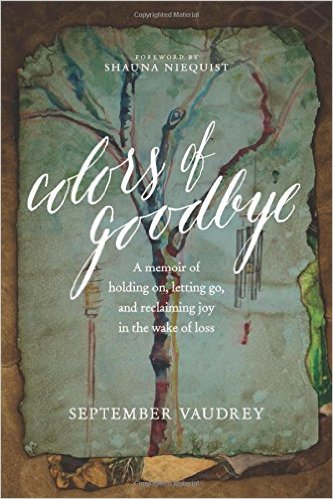 Colors of Goodbye: A Memoir of Holding On, Letting Go
Colors of Goodbye: A Memoir of Holding On, Letting Go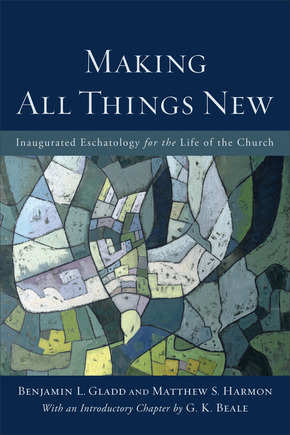 Making All Things New: Inaugurated Eschatology for the Life of the Church Benjamin L. Gladd & Matthew S. Harmon (with a hefty introductory chapter by G.K. Beale) (Baker Academic) $19.99 Wow –this just came and it is asking a very, very important question. If we believe — as we’ve written about often, here, even in the last column which introduced the forthcoming James K.A. Smith book — that God’s Kingdom is in some ways now inaugurated, and that the “end times” of “all things new” and “creation restored” is breaking into history now in newness, well, how then shall we pastor? What should the shepherds to do prepare people for “now but not yet” sorts of lifestyles?
Making All Things New: Inaugurated Eschatology for the Life of the Church Benjamin L. Gladd & Matthew S. Harmon (with a hefty introductory chapter by G.K. Beale) (Baker Academic) $19.99 Wow –this just came and it is asking a very, very important question. If we believe — as we’ve written about often, here, even in the last column which introduced the forthcoming James K.A. Smith book — that God’s Kingdom is in some ways now inaugurated, and that the “end times” of “all things new” and “creation restored” is breaking into history now in newness, well, how then shall we pastor? What should the shepherds to do prepare people for “now but not yet” sorts of lifestyles? 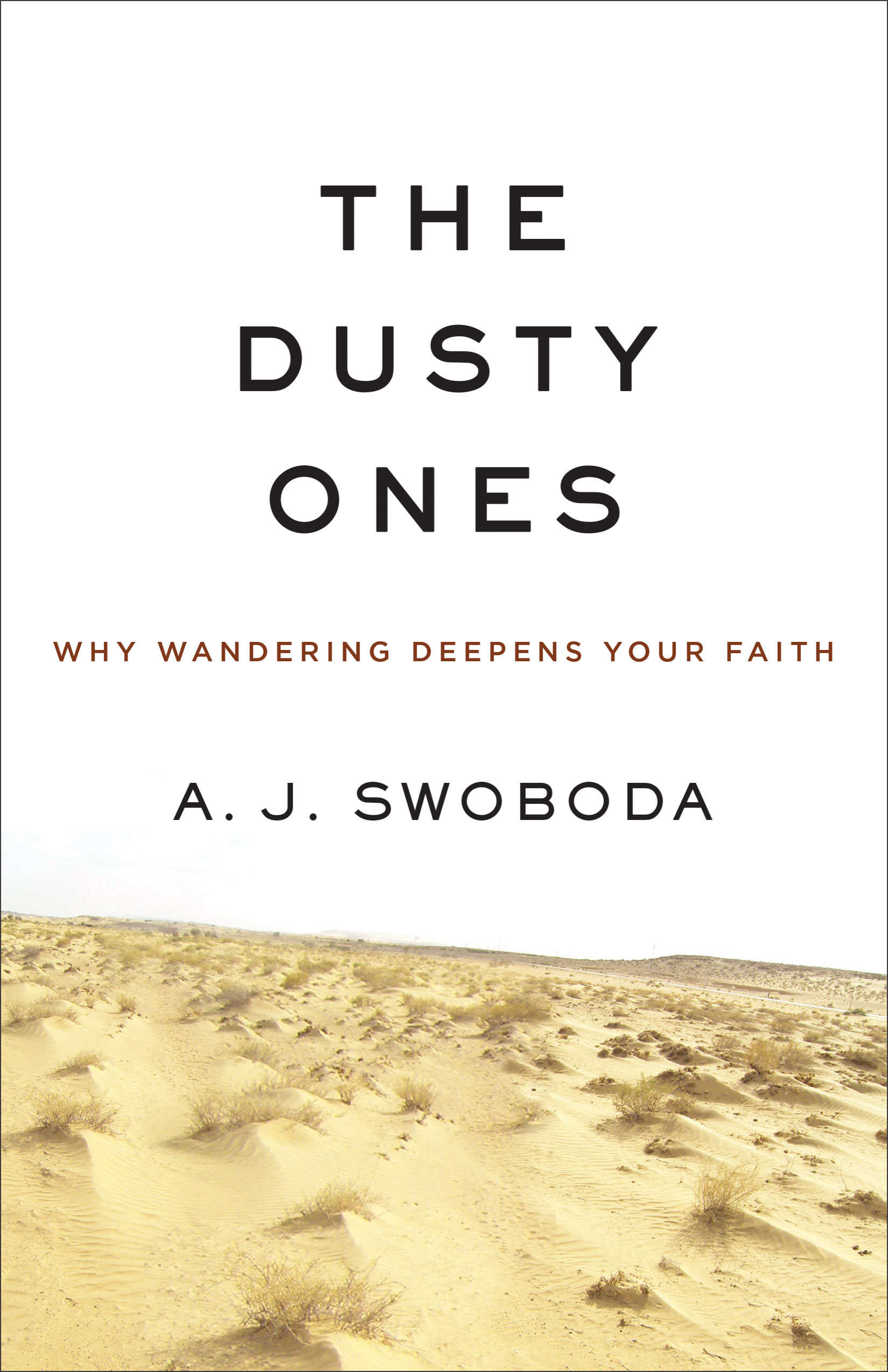 The Dusty Ones: Why Wandering Deepens Your Faith A.J. Swoboda (Baker) $15.99 Last year about this time I read A.J.s A Glorious Dark which reflects profoundly on the triduum — Good Friday, Holy Saturday, and Easter Sunday. Through his own study and sharing of pain and doubt and darkness and trust, that book moved me deeply and I will re-read it this Holy Week I am sure. (By the way, not only was Glorious Dark one of my favorite books of last year, he also co wrote the significant and commendable Evangelical Ecotheology.)
The Dusty Ones: Why Wandering Deepens Your Faith A.J. Swoboda (Baker) $15.99 Last year about this time I read A.J.s A Glorious Dark which reflects profoundly on the triduum — Good Friday, Holy Saturday, and Easter Sunday. Through his own study and sharing of pain and doubt and darkness and trust, that book moved me deeply and I will re-read it this Holy Week I am sure. (By the way, not only was Glorious Dark one of my favorite books of last year, he also co wrote the significant and commendable Evangelical Ecotheology.) One Dress. One Year. One Girl’s Stand Against Human Trafficking Bethany Winz with Susanna Foth Aughtmon (Baker) $12.99 Just earlier today I read of the awful slave ships from Thailand that do much of the commercial fishing that sells shrimp to Kroger, Wal-Mart, Whole Foods and Red Lobster. President Obama last month signed a bill to ban all seafood caught with slave labor, which rocked the Thai fishing industry — David Batstone at
One Dress. One Year. One Girl’s Stand Against Human Trafficking Bethany Winz with Susanna Foth Aughtmon (Baker) $12.99 Just earlier today I read of the awful slave ships from Thailand that do much of the commercial fishing that sells shrimp to Kroger, Wal-Mart, Whole Foods and Red Lobster. President Obama last month signed a bill to ban all seafood caught with slave labor, which rocked the Thai fishing industry — David Batstone at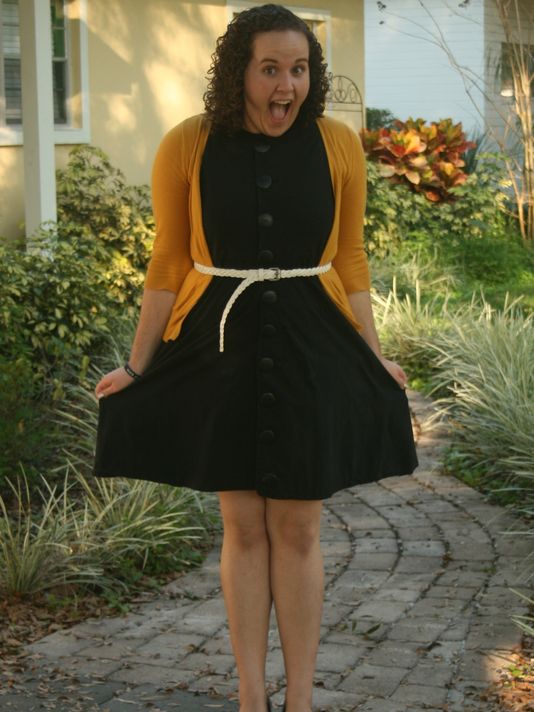 now in college at Trevecca Nazarene University), learned about some of this sort of stuff and just decided she had to do something. She tells us that she processes the world and what she learns by blogging and writing, and this fantastic new book emerged from her one-year experience of writing about a social experiment. Bethany determined to wear the same black dress (that she made, by the way) every day for a year to focus attention on the lack of choices people in modern-day slavery face and to raise money to help end human trafficking. It is fascinating to see what all happened to and through her in that year — her blog really was popular and she’s a fine young writer, so it makes great sense to know this is now out as a book.
now in college at Trevecca Nazarene University), learned about some of this sort of stuff and just decided she had to do something. She tells us that she processes the world and what she learns by blogging and writing, and this fantastic new book emerged from her one-year experience of writing about a social experiment. Bethany determined to wear the same black dress (that she made, by the way) every day for a year to focus attention on the lack of choices people in modern-day slavery face and to raise money to help end human trafficking. It is fascinating to see what all happened to and through her in that year — her blog really was popular and she’s a fine young writer, so it makes great sense to know this is now out as a book.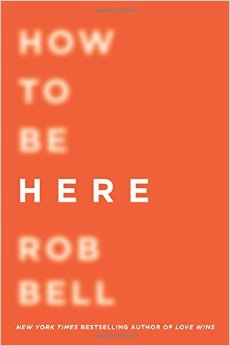 How to Be Here: A Guide to Creating a Life Worth Living Rob Bell (HarperOne) 25.99 Again, this is brand new and I haven’t spent more than a few minutes browsing through it. I can tell you two things, at least: even though the advanced buzz on this has been that Rob is seeing his own calling these days (at least in this book project and round of public speaking) as oriented to those outside of the church, doing what some dumbly used to call a “crossover” book, he is still clearly writing as a pastor, a person of faith, a media figure who is drawing people into the story of Jesus as revealed in the Bible. Agree or not with all that he does or says in this good goal getting folks to consider the Bible — how is that working for you in your own life, I’d ask before getting ugly in condemning Bell for sounding less evangelical than he once did, by the way — he does cite the Bible and Christian theologians in this volume. He has not lost his faith or gone “secular” (certainly, not: this is a guy who did a bar and rock venue tour doing a lecture called “Everything is Religious.”) He cites St. Ephraim the Syrian and Dorothy Sayers and Cornelius Plantinga (yes, Engaging God’s World!) and Charles Foster, all right next to Rumi the poet and Abraham Heschel the prophet, Elizabeth Gilbert — he loves, as he should, her recent book on creativity called Big Magic — and the podcast comedian Pete Holmes, not to mention the fun band Jimmy Eats World, who I think he’s quoted before.
How to Be Here: A Guide to Creating a Life Worth Living Rob Bell (HarperOne) 25.99 Again, this is brand new and I haven’t spent more than a few minutes browsing through it. I can tell you two things, at least: even though the advanced buzz on this has been that Rob is seeing his own calling these days (at least in this book project and round of public speaking) as oriented to those outside of the church, doing what some dumbly used to call a “crossover” book, he is still clearly writing as a pastor, a person of faith, a media figure who is drawing people into the story of Jesus as revealed in the Bible. Agree or not with all that he does or says in this good goal getting folks to consider the Bible — how is that working for you in your own life, I’d ask before getting ugly in condemning Bell for sounding less evangelical than he once did, by the way — he does cite the Bible and Christian theologians in this volume. He has not lost his faith or gone “secular” (certainly, not: this is a guy who did a bar and rock venue tour doing a lecture called “Everything is Religious.”) He cites St. Ephraim the Syrian and Dorothy Sayers and Cornelius Plantinga (yes, Engaging God’s World!) and Charles Foster, all right next to Rumi the poet and Abraham Heschel the prophet, Elizabeth Gilbert — he loves, as he should, her recent book on creativity called Big Magic — and the podcast comedian Pete Holmes, not to mention the fun band Jimmy Eats World, who I think he’s quoted before.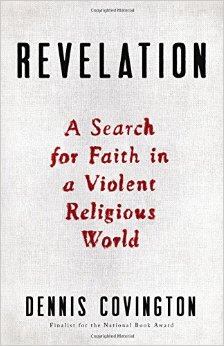 Revelation: A Search for Faith in a Violent Religious World Dennis Covington (Little Brown) $26.00 Okay, I announced this a week ago in a listing, not unlike this one, of brand new titles I wanted to tell you about but had not yet read. I stayed glued to a chair or a bed or another chair for hours on end over the weekend and finished this in one huge gulp or two. As I expected it blew me away and I now really want to tell you about it.
Revelation: A Search for Faith in a Violent Religious World Dennis Covington (Little Brown) $26.00 Okay, I announced this a week ago in a listing, not unlike this one, of brand new titles I wanted to tell you about but had not yet read. I stayed glued to a chair or a bed or another chair for hours on end over the weekend and finished this in one huge gulp or two. As I expected it blew me away and I now really want to tell you about it.
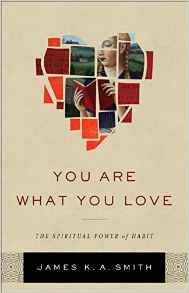 I want to ease into a review of James K.A. Smith’s important new book, a book that I am very, very impressed with, and found to be a joy and of great value, the much-anticipated You Are What You Love: The Spiritual Power of Habit just about to be published by Brazos Press ($19.99.) It will be shipping shortly and we will have it on sale at $17.99 very soon.
I want to ease into a review of James K.A. Smith’s important new book, a book that I am very, very impressed with, and found to be a joy and of great value, the much-anticipated You Are What You Love: The Spiritual Power of Habit just about to be published by Brazos Press ($19.99.) It will be shipping shortly and we will have it on sale at $17.99 very soon.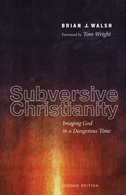
 called a “Perspectives Class” that we got from Toronto’s
called a “Perspectives Class” that we got from Toronto’s 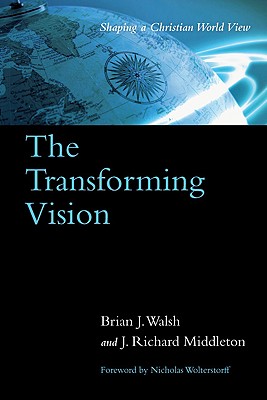
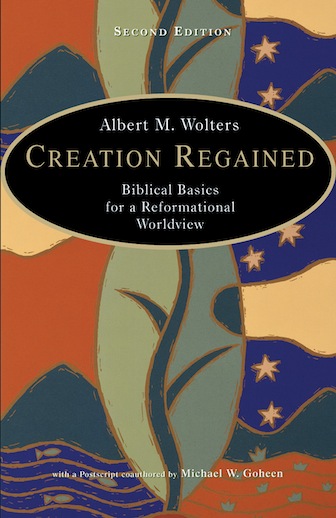
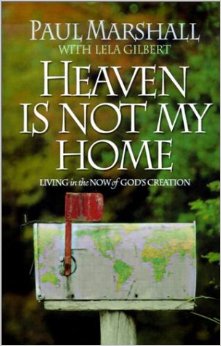
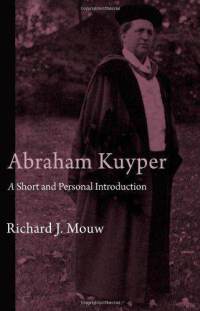
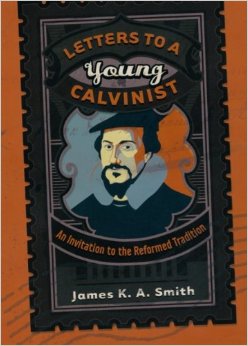 stock, or his more specific introduction to gracious, broad Kuyperian themes — and Augustinian as well — in his set of lovely pastoral letters to young Reformed Christians called Letters to a Young Calvinist: An Invitation to the Reformed Tradition (Brazos Press; $14.99.) I once (okay more than once) quipped that that particular little book might be subtitled “moving from Piper to Kuyper.”
stock, or his more specific introduction to gracious, broad Kuyperian themes — and Augustinian as well — in his set of lovely pastoral letters to young Reformed Christians called Letters to a Young Calvinist: An Invitation to the Reformed Tradition (Brazos Press; $14.99.) I once (okay more than once) quipped that that particular little book might be subtitled “moving from Piper to Kuyper.” 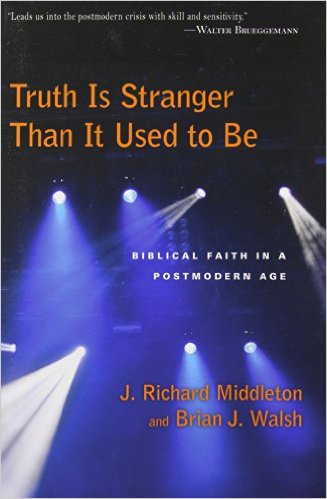
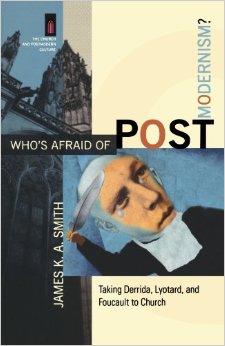 like James Olthius as they began to dig deep into postmodern philosophy. Think of Smith’s own important little book, based on lectures given at L’Abri, called Who’s Afraid of Postmodernism: Taking Derrida, Lyotard and Foucault to Church (Baker Academic; $19.99.) These and his other books on postmodernism do not drift off into weird radical theology or the slippery trendiness of some in the emerging church conversations, yet give a rousing call for historically orthodox believers to engage and in some ways embrace insights from continental philosophy. Which surely includes rejecting the straight-jacket of faith in autonomous reason that seems so prevalent in many theological circles and, he might say, distorted some of our best theological traditions.
like James Olthius as they began to dig deep into postmodern philosophy. Think of Smith’s own important little book, based on lectures given at L’Abri, called Who’s Afraid of Postmodernism: Taking Derrida, Lyotard and Foucault to Church (Baker Academic; $19.99.) These and his other books on postmodernism do not drift off into weird radical theology or the slippery trendiness of some in the emerging church conversations, yet give a rousing call for historically orthodox believers to engage and in some ways embrace insights from continental philosophy. Which surely includes rejecting the straight-jacket of faith in autonomous reason that seems so prevalent in many theological circles and, he might say, distorted some of our best theological traditions.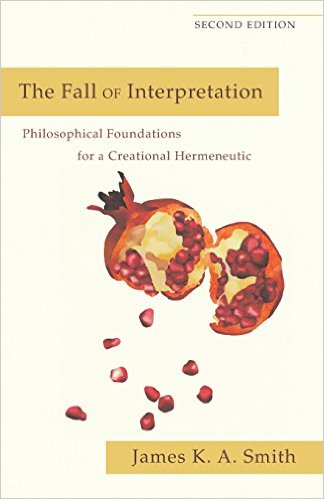
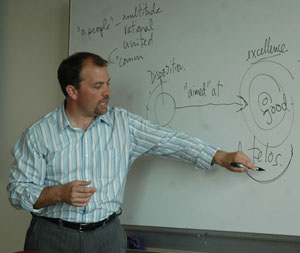
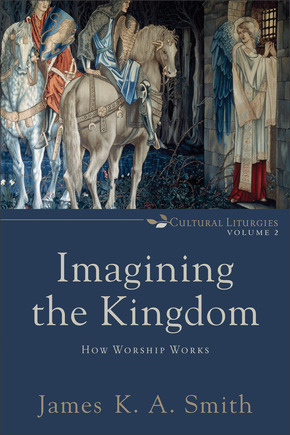
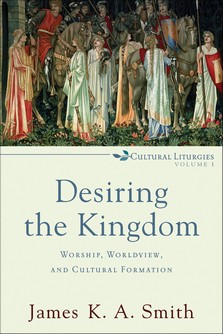
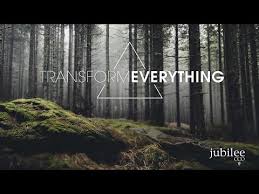 unpacking book boxes from the huge
unpacking book boxes from the huge 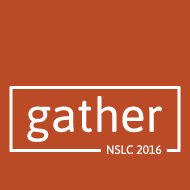
 Thank you for joining this far-flung reading community, being a part of the on-going conversations, even of breaking down old walls (oh, between, just for instance) mainline denominational church folks and para-church ministries, between liturgical traditions and more free-spirited charismatics, between progressives and missionals and evangelicals. Jubilee and the Taylor University events both bore witness to ethnic, racial diversity, with women and men from a variety of faith traditions pointing us towards a generous orthodoxy and inviting lived practices that are informed by Biblical and theological reflection and not civil religion or old school dogma.
Thank you for joining this far-flung reading community, being a part of the on-going conversations, even of breaking down old walls (oh, between, just for instance) mainline denominational church folks and para-church ministries, between liturgical traditions and more free-spirited charismatics, between progressives and missionals and evangelicals. Jubilee and the Taylor University events both bore witness to ethnic, racial diversity, with women and men from a variety of faith traditions pointing us towards a generous orthodoxy and inviting lived practices that are informed by Biblical and theological reflection and not civil religion or old school dogma.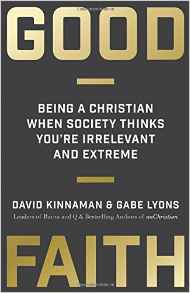 Good Faith: Being a Christian When Society Thinks You’re Irrelevant and Extreme David Kinnaman & Gabe Lyons (Baker Books) $19.99
Good Faith: Being a Christian When Society Thinks You’re Irrelevant and Extreme David Kinnaman & Gabe Lyons (Baker Books) $19.99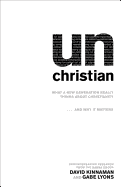 young adults tended to think about the Christian faith and American church life, a useful book called unChristian:
young adults tended to think about the Christian faith and American church life, a useful book called unChristian: 
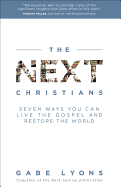 The Next Christians: Seven Ways You Can Live the Gospel and Restore the World Gabe Lyons (Multnomah Books) $15.99 The first third of this explores the demise of the end of American civil religion and Christendom, and offers a four-chapter-Biblical story that is more helpful then the typical dualistic fare, and the last two thirds offers seven key areas where the rising generations of Christians are leading the way to fresh practices across various spheres of life. I really, really like it and recommend it often.
The Next Christians: Seven Ways You Can Live the Gospel and Restore the World Gabe Lyons (Multnomah Books) $15.99 The first third of this explores the demise of the end of American civil religion and Christendom, and offers a four-chapter-Biblical story that is more helpful then the typical dualistic fare, and the last two thirds offers seven key areas where the rising generations of Christians are leading the way to fresh practices across various spheres of life. I really, really like it and recommend it often.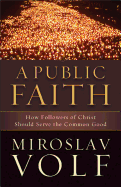 Public Faith: How Followers of Christ Should Serve the Common Good Miroslav Volf (Baker) $18.99 I am honored to have a blurb on the back of this, exclaiming how much I appreciated it. It is about more than politics as such, and argues for a robust commitment to the common good. Very thoughtful, very impressive.
Public Faith: How Followers of Christ Should Serve the Common Good Miroslav Volf (Baker) $18.99 I am honored to have a blurb on the back of this, exclaiming how much I appreciated it. It is about more than politics as such, and argues for a robust commitment to the common good. Very thoughtful, very impressive.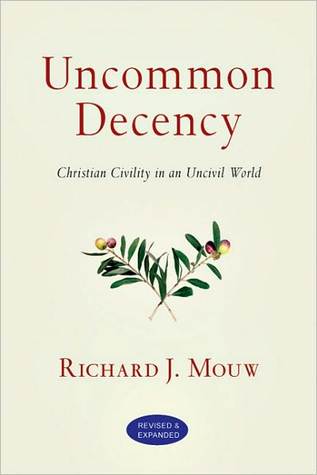 Uncommon Decency: Christian Civility in an Uncivil World Richard Mouw (IVP) $16.00 I am not alone in suggesting this is one of my all-time favorite books. It is nicely written, very thoughtful, and helps us be honest about any number of quandaries and challenges in showing “convicted civility.” I know you know it is one of the most needed topics these days. Please, please, please, help us get this book into the hands of those who most need it, which, these days, is just about all of us. That last thing we need now is a loud-mouthed and rude critique of the loud-mouthed and rude. Mouw can help.
Uncommon Decency: Christian Civility in an Uncivil World Richard Mouw (IVP) $16.00 I am not alone in suggesting this is one of my all-time favorite books. It is nicely written, very thoughtful, and helps us be honest about any number of quandaries and challenges in showing “convicted civility.” I know you know it is one of the most needed topics these days. Please, please, please, help us get this book into the hands of those who most need it, which, these days, is just about all of us. That last thing we need now is a loud-mouthed and rude critique of the loud-mouthed and rude. Mouw can help.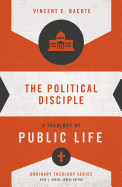 The Political Disciple: A Theology of Public Life Vincent Bacote (Zondervan) $11.99 You may recall that we hosted Dr. Bacote at a lectureship we sponsor in Pittsburgh each summer, and we promoted this little book with great joy. It is part of a four-book series of “ordinary theology” and is maybe the best, most balanced, short book on public theology. Bacote has served on the Board of the sophisticated Center for Public Justice in their efforts to offer a non-partisan framework for political life (drawing, among other things, the serious social philosophy of Abraham Kuyper.) Bacote gives us very accessible intro to public theology and Christian views of civic life.
The Political Disciple: A Theology of Public Life Vincent Bacote (Zondervan) $11.99 You may recall that we hosted Dr. Bacote at a lectureship we sponsor in Pittsburgh each summer, and we promoted this little book with great joy. It is part of a four-book series of “ordinary theology” and is maybe the best, most balanced, short book on public theology. Bacote has served on the Board of the sophisticated Center for Public Justice in their efforts to offer a non-partisan framework for political life (drawing, among other things, the serious social philosophy of Abraham Kuyper.) Bacote gives us very accessible intro to public theology and Christian views of civic life.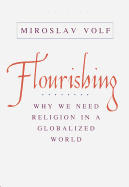 Flourishing: Why We Need Religion in a Globalized World Miroslav Volf (Yale University Press) $28.00 This is a major, new, academic volume, making a case that religion is important, even in the modern, global world. Volf is an important author; as he wrote with such acute insight in Exclusion and Embrace, his own experiences in the violent context of the Serbo-Croatian war has given him great sensitivity to God’s call to be a peacemaker amidst inter-faith conflict. This is going to be a very important contribution, especially in a globalized culture where
Flourishing: Why We Need Religion in a Globalized World Miroslav Volf (Yale University Press) $28.00 This is a major, new, academic volume, making a case that religion is important, even in the modern, global world. Volf is an important author; as he wrote with such acute insight in Exclusion and Embrace, his own experiences in the violent context of the Serbo-Croatian war has given him great sensitivity to God’s call to be a peacemaker amidst inter-faith conflict. This is going to be a very important contribution, especially in a globalized culture where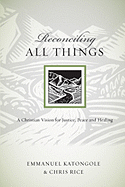 Reconciling All Things: A Christian Vision for Justice, Peace and Healing Emmanuel Katongole and Chris Rice (IVP) $17.00 This is the first book in a wonderful multi-volume series from the Duke Divinity School’s Center for Reconciliation, published in partnership with InterVarsity Press. It is a fabulous, refreshing, inspiring book co-written by a global scholar and a US activist. Oh my, if only we would embrace this big vision of God’s reconciling work in all creation and see ourselves as agents of that restoration mission. Their tone and insight and passion would have been a nice addition to the good faith project of Gabe & David. This book (and the others in the set) are remarkable and important. This one, at least, should be on your shelf and in your conversations.
Reconciling All Things: A Christian Vision for Justice, Peace and Healing Emmanuel Katongole and Chris Rice (IVP) $17.00 This is the first book in a wonderful multi-volume series from the Duke Divinity School’s Center for Reconciliation, published in partnership with InterVarsity Press. It is a fabulous, refreshing, inspiring book co-written by a global scholar and a US activist. Oh my, if only we would embrace this big vision of God’s reconciling work in all creation and see ourselves as agents of that restoration mission. Their tone and insight and passion would have been a nice addition to the good faith project of Gabe & David. This book (and the others in the set) are remarkable and important. This one, at least, should be on your shelf and in your conversations.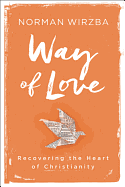 The Way of Love: Recovering the Heart of Christianity Norman Wirzba (HarperOne) $25.99 This is brand new and I am very pleased to announce it. I’m eager to see how Wirzba writes about this chief Christian virtue and how he applies it to our strained cultural situation. I trust you know his name – we awarded his most previous Baker Academic Press book, From Nature to Creation:
The Way of Love: Recovering the Heart of Christianity Norman Wirzba (HarperOne) $25.99 This is brand new and I am very pleased to announce it. I’m eager to see how Wirzba writes about this chief Christian virtue and how he applies it to our strained cultural situation. I trust you know his name – we awarded his most previous Baker Academic Press book, From Nature to Creation: 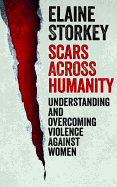 Scars Across Humanity: Understanding Violence Against Women Elaine Storkey (Cascade) $16.00 When I think of good faith Christian leaders who have done some of what Kinnaman and Lyons call us to — living radically and yet winsomely in the public square — I think of the UK scholar, activist, writer, Elaine Storkey (and, while we are at it, her thoughtful husband, Alan, author of Jesus and Politics.) I admire the broad and sophisticated work of many British evangelicals who seem to have avoided the polarizing rhetoric of the US Christian right and seem to be taken seriously even by secular authorities and agencies. (Elaine directed the Tear Fund for more than a decade and garnered international respect.) In this book, Elaine offers a very detailed, sophisticated and rather rare study of the crisis of how women are mistreated — as it is manifested throughout the world. From domestic violence in the so-called developed world to global concerns such as female genital mutilation or honor killings in the sub-continent or enforced under-age marriage, she brings a Biblically-informed Christian social theory and faith-based feminism to bear, exposing and offering proposals to reform complex patterns of injustice and abuse.
Scars Across Humanity: Understanding Violence Against Women Elaine Storkey (Cascade) $16.00 When I think of good faith Christian leaders who have done some of what Kinnaman and Lyons call us to — living radically and yet winsomely in the public square — I think of the UK scholar, activist, writer, Elaine Storkey (and, while we are at it, her thoughtful husband, Alan, author of Jesus and Politics.) I admire the broad and sophisticated work of many British evangelicals who seem to have avoided the polarizing rhetoric of the US Christian right and seem to be taken seriously even by secular authorities and agencies. (Elaine directed the Tear Fund for more than a decade and garnered international respect.) In this book, Elaine offers a very detailed, sophisticated and rather rare study of the crisis of how women are mistreated — as it is manifested throughout the world. From domestic violence in the so-called developed world to global concerns such as female genital mutilation or honor killings in the sub-continent or enforced under-age marriage, she brings a Biblically-informed Christian social theory and faith-based feminism to bear, exposing and offering proposals to reform complex patterns of injustice and abuse. 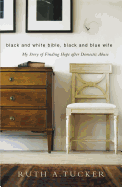
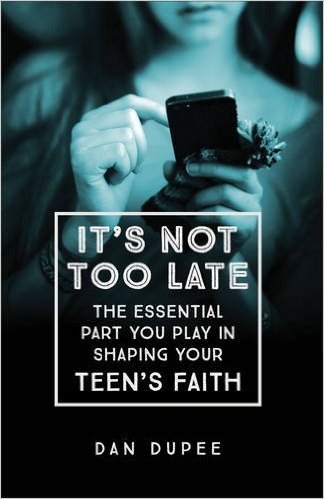 It’s Not Too Late: The Essential Part You Play in Shaping Your Teen’s Faith Dan Dupee (Baker Books) $15.99
It’s Not Too Late: The Essential Part You Play in Shaping Your Teen’s Faith Dan Dupee (Baker Books) $15.99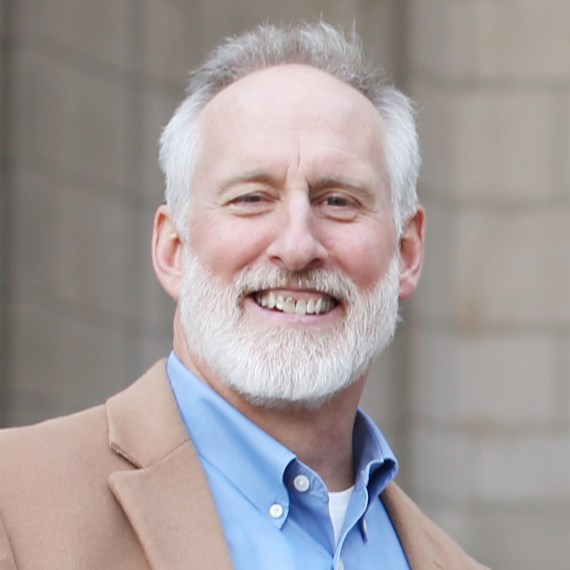 As I’ve said, Dan Dupee is a good friend and a person I admire greatly. I’ll happily admit that I’m biased: Beth and I know Dan and his wife, Carol, and some of his kids, too, themselves now college students or graduates. Dan is the past President of our beloved campus ministry organization, the CCO (Coalition for Christian Outreach) for which we used to work and still serve as Associate Staff and bookseller for the organization.
As I’ve said, Dan Dupee is a good friend and a person I admire greatly. I’ll happily admit that I’m biased: Beth and I know Dan and his wife, Carol, and some of his kids, too, themselves now college students or graduates. Dan is the past President of our beloved campus ministry organization, the CCO (Coalition for Christian Outreach) for which we used to work and still serve as Associate Staff and bookseller for the organization.